45 US Attractions All History Buffs Should Visit in Their Lifetime
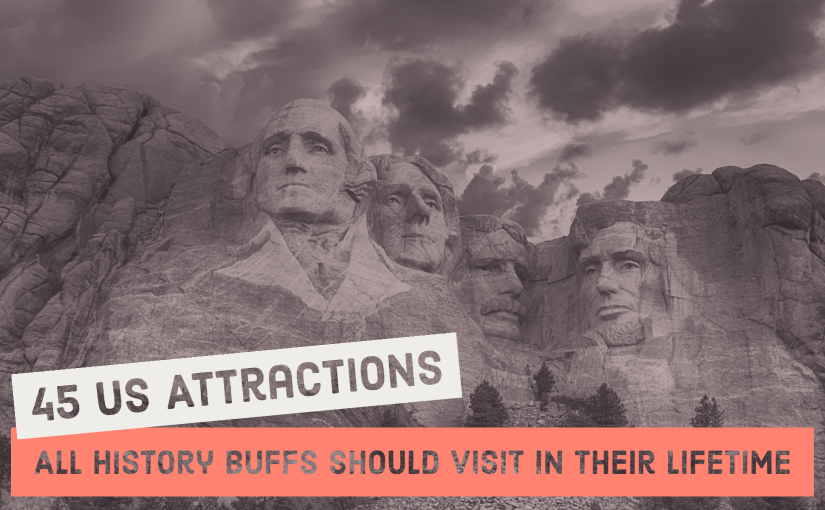
The United States is one of the biggest and most influential governments in the world. We have played a role in so many events worldwide that have altered the course of our history as a whole. Many of these events have occurred right in our very own backyard yet we don’t know the significance of it or don’t take the time to explore it. For example, I’ve lived half an hour away from Washington DC most of my life and have never taken the time to understand the importance of the many museums, memorials, and government buildings that line its streets. It’s crazy to think that the decisions and actions made in these institutions can affect a country on the other side of the world.
Below is a list of 45 such attractions in the United States that will have history buffs, and those wanting to learn about US history, in awe. The list comprises battlefields, museums, and even some underrated attractions that are important in our country’s history. If you can’t get in your car, take a train, or catch a plane and experience it in person, do the next best thing and read about it below.
1. The White House – Washington, D.C.
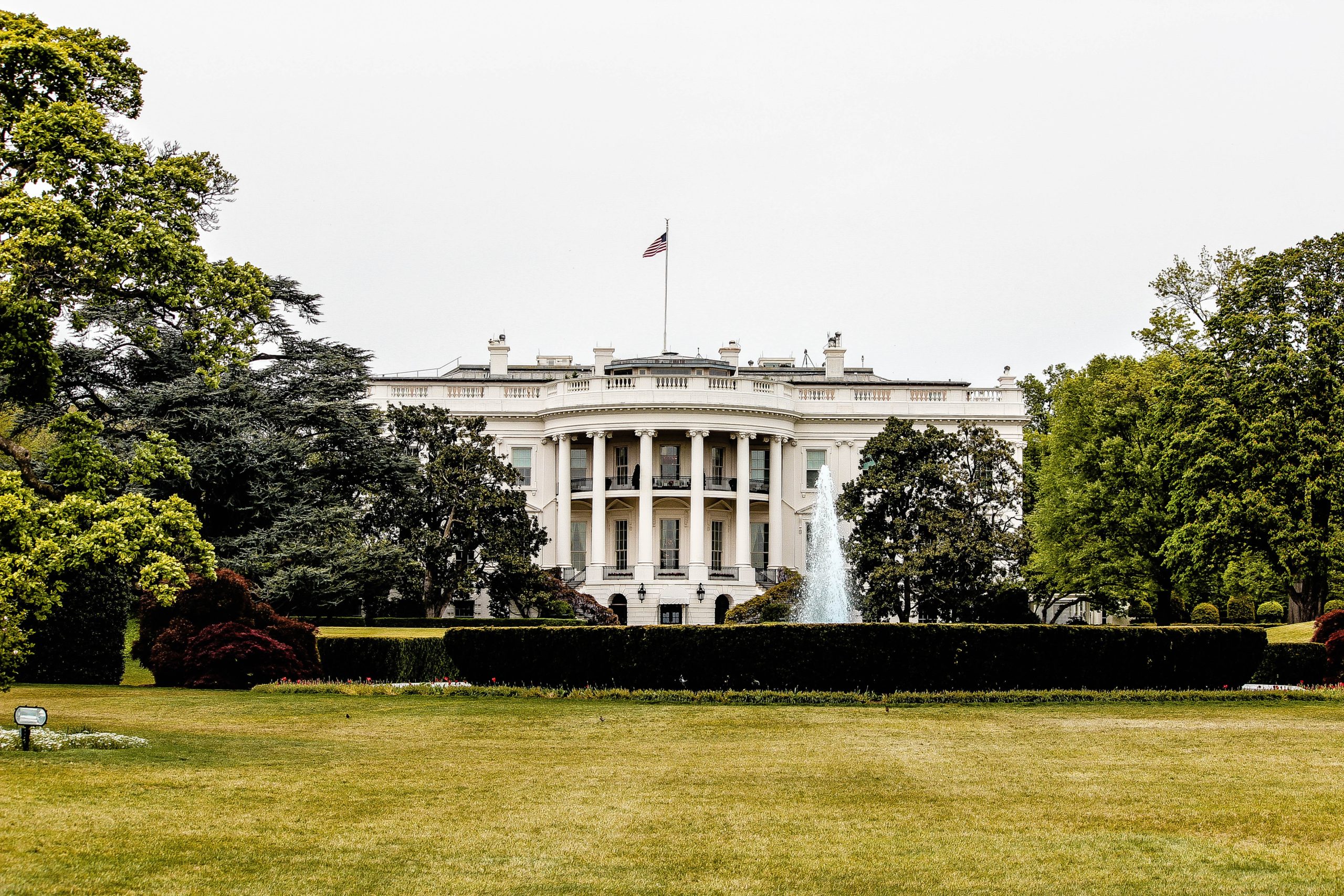
The White House – Washington, D.C.
Let’s start with one of the most obvious historic attractions and most recognized structures in the world, The White House. Home and office to one of the most important people in the world, the President of the United States, the White House is a historical structure like no other. Visitors can go on a tour of the White House and see public areas such as the East Room and the Red Room, though you have to register several months in advance.
Fun fact: The White House has tons of interesting aspects such as an indoor pool under the press room, a florist, a chocolate shop, a bowling alley, and a theater room.
2. Betsy Ross House – Philadelphia, Pennsylvania
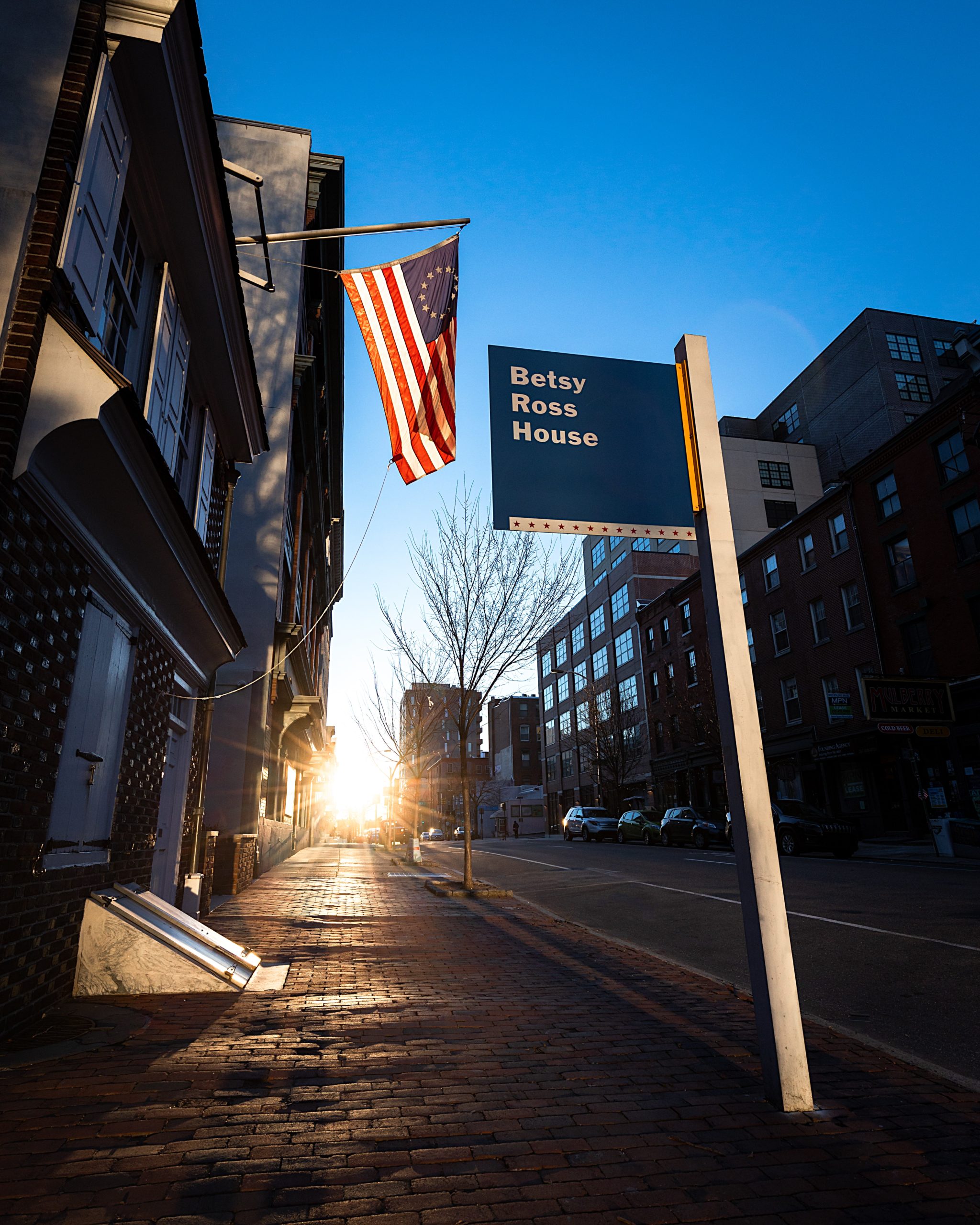
Betsy Ross House – Philadelphia, Pennsylvania
The Betsy Ross House is where the seamstress of the same name supposedly lived when she sewed the first American flag. She and her husband lived and ran their upholstery business from the house for nearly 13 years. Today, you can tour the 18th-century home which tells her story, as well as those of women who worked during the Revolutionary War, through interactive exhibits and memorabilia.
Fun fact: Betsy Ross and her husband never owned the house, but rather rented it while they stayed there.
3. 9/11 Memorial and Museum – New York, New York
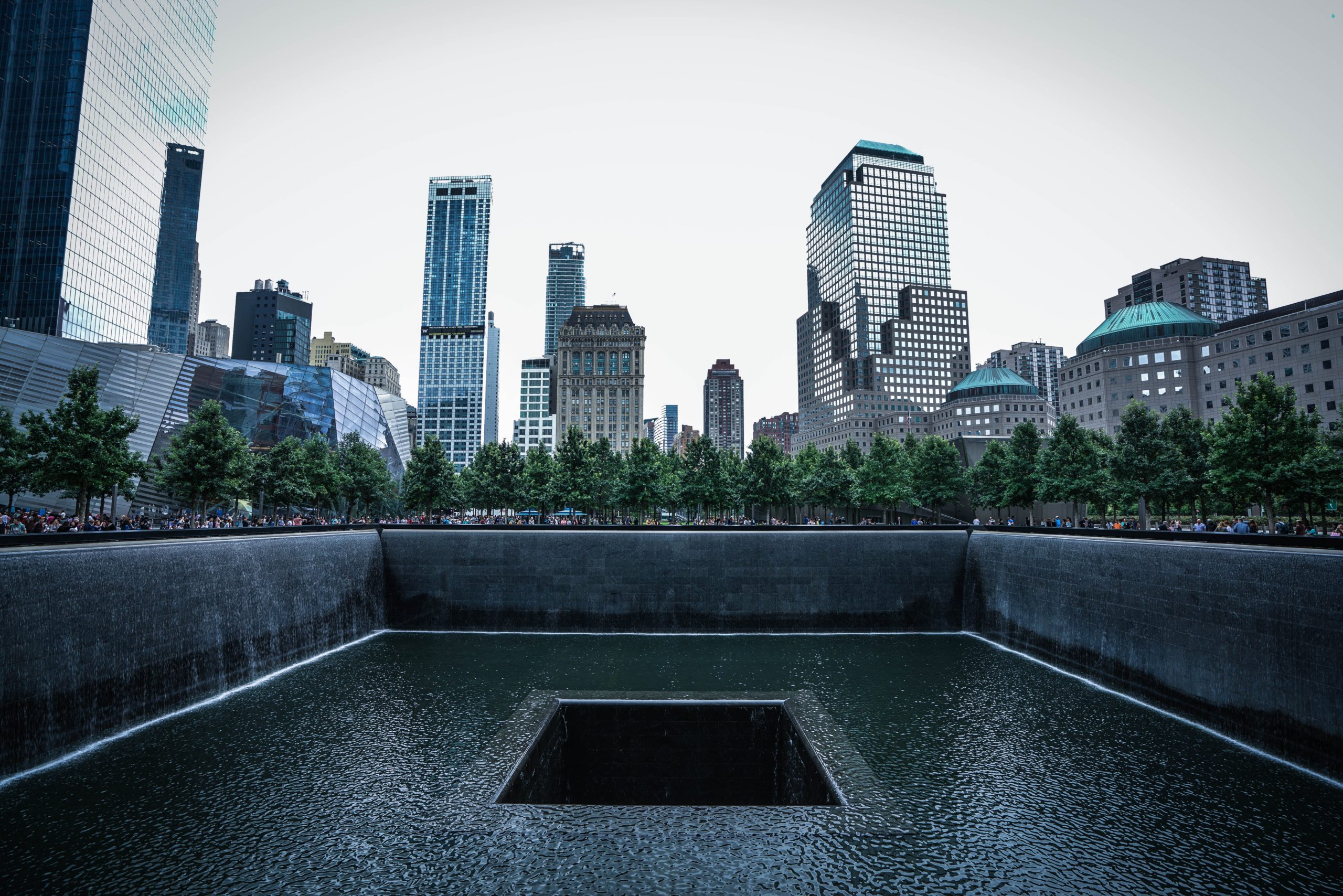
9/11 Memorial and Museum – New York, New York
9/11 changed New York, the United States, and the world forever. Housed where the Twin Towers once stood, the National September 11 Memorial Museum is an important part of American history. It tells the story of the largest terrorist attack our nation faced through amazing structures like twin reflecting pools, a waterfall, and bronze parapets etched with the names of the 2,977 people who were killed.
Fun fact: The memorial opened on September 11, 2011, exactly ten years after the attacks.
4. Ford’s Theatre – Washington, D.C.
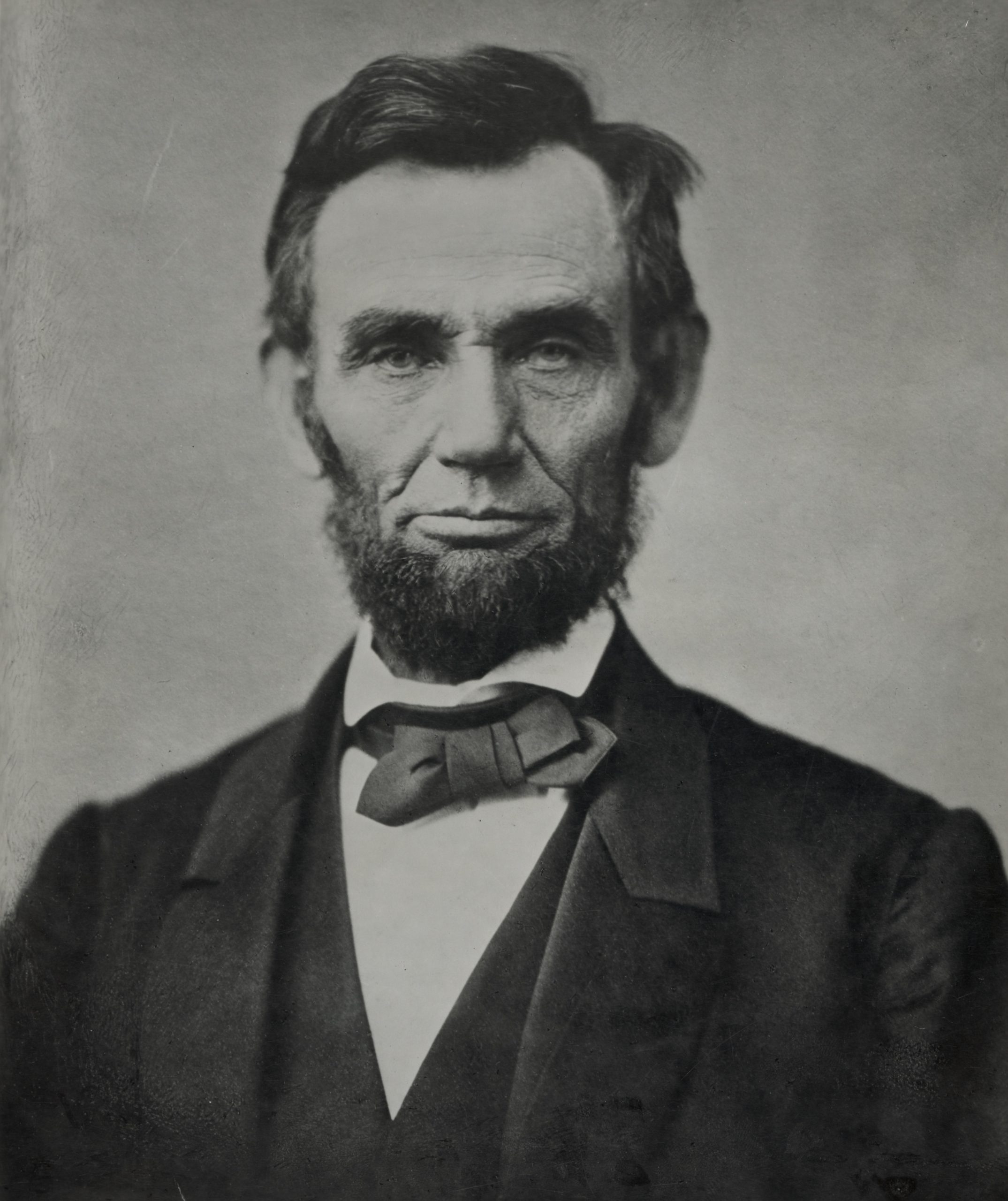
Ford’s Theatre – Washington, D.C.
While the stunning theatre itself is still operational and hosts several live shows throughout the year, this historical venue is renowned for being the site of Abraham Lincoln’s assassination. There is an on-site museum with exhibits and memorabilia dedicated toward his presidency as well as his death – including the weapon John Wilkes Booth used to assassinate him.
Fun fact: Tickets are never sold for the presidential box at Ford’s Theater.
5. National Civil Rights Museum – Memphis, Tennessee

National Civil Rights Museum – Memphis, Tennessee
The civil rights movement in the United States is one of the richest parts of our history, and the National Civil Rights Museums tells the story of black Americans who fought for their rights and continue to till the present day. The museum comprises nearly 300 artifacts, interactive exhibits, films, and more which documents racism in America over the years.
Fun fact: The museum is built around the site of MLK Jr.’s assassination.
6. Gettysburg National Military Park – Gettysburg, Pennsylvania
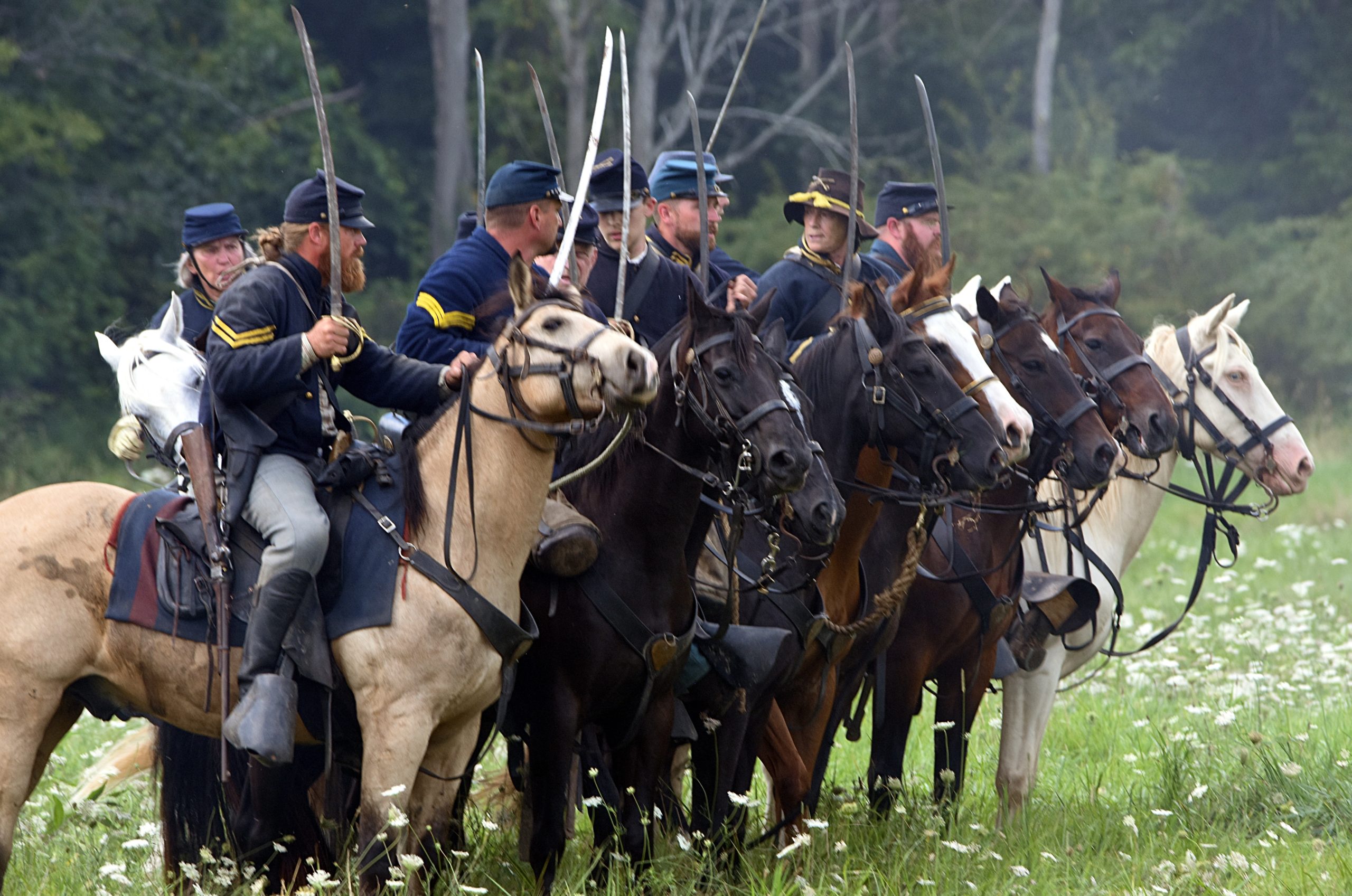
Gettysburg National Military Park – Gettysburg, Pennsylvania
The Civil War played a role in the development of our nation like no other event in American History, and one of the costliest battles in the war occurred in Pennsylvania’s own Gettysburg National Military Park. During the warmer months, historians and Civil War reenactors flock to the park to bring the war back to life on the battlefield. In addition to the reenactments, there are demonstrations, battle walks, campfires, and more.
Fun fact: Stop by the Gettysburg National Cemetery where President Lincoln gave his famed Gettysburg Address speech.
7. Montpelier – Orange County, Virginia
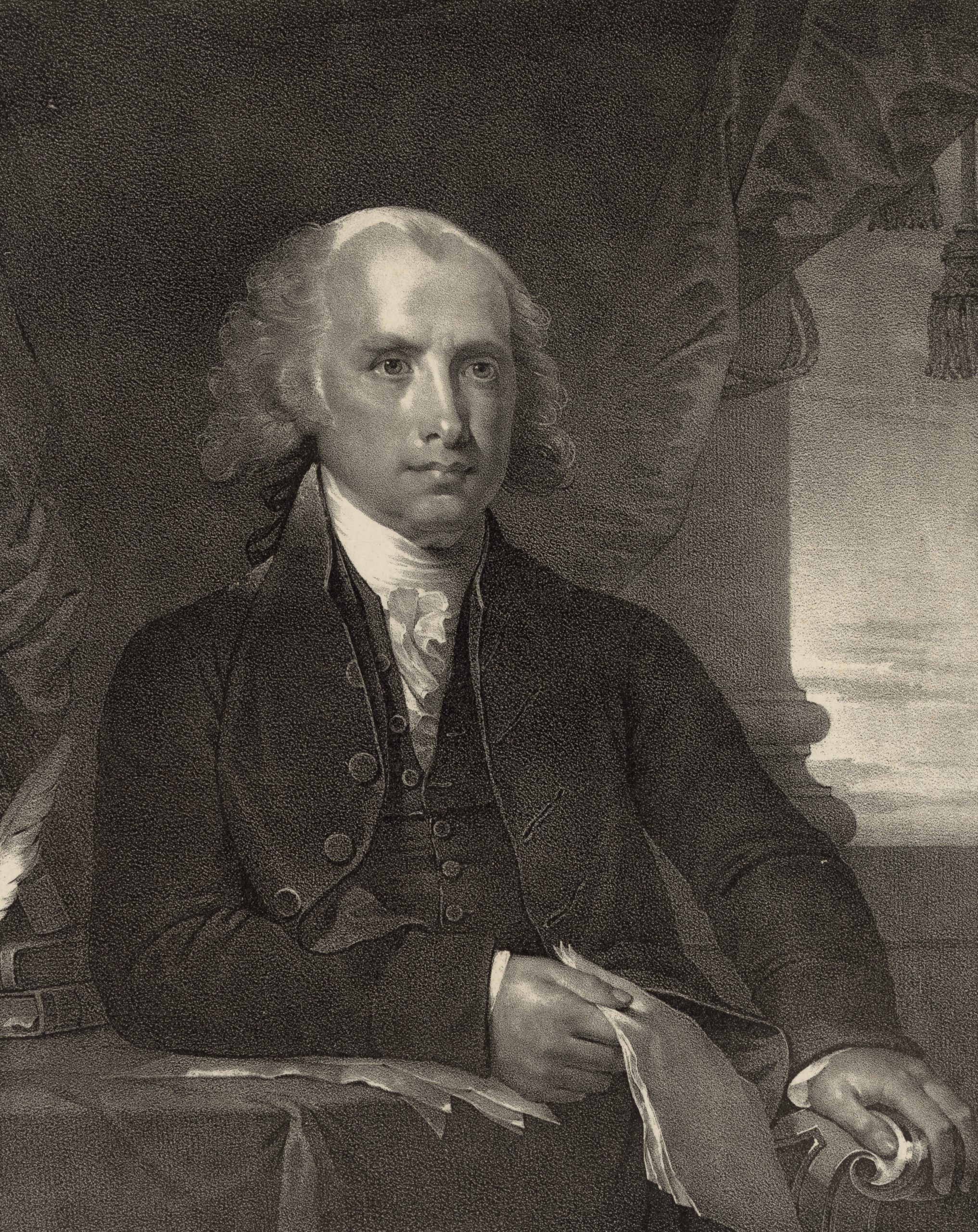
Montpelier – Orange County, Virginia
James Madison was the 4th president of the United States and also the principal author of the Constitution; Montpelier was his plantation home. This historic site can be toured for an interesting and educational journey into the former president’s past as well as the livelihood of those on the plantation.
Fun fact: Be sure to visit “The Mere Distinction of Color”, a permanent exhibit curated by the descendants of slaves who worked in Montpelier.
8. Tenement Museum – New York, New York
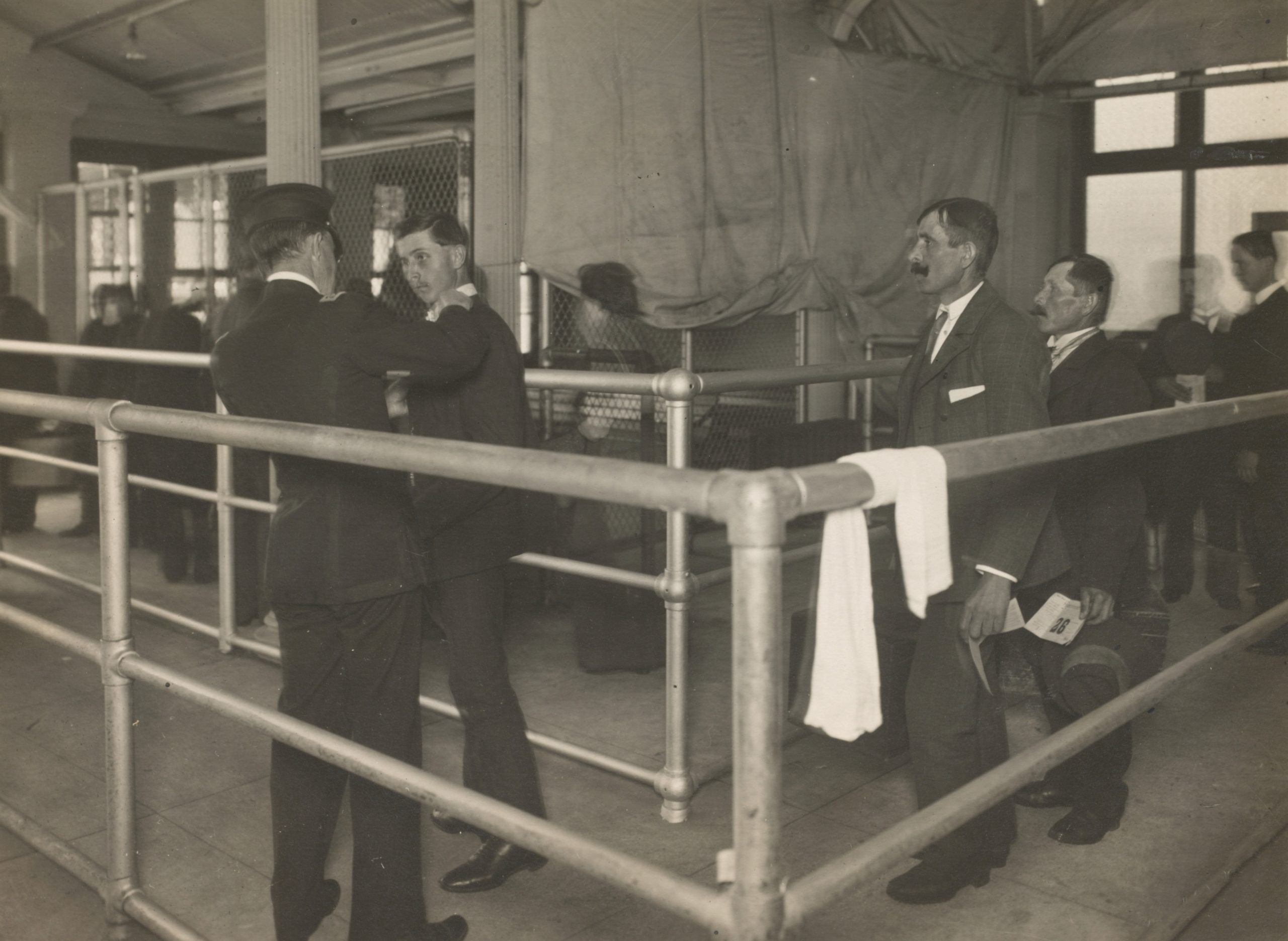
Tenement Museum – New York, New York
America is a land made up of immigrants from all over the world. The Tenement Museum in New York tells their story, their journey here, and their life once they arrived, through all of the ups and downs. There are stories composed by the actual people who migrated to the US, documenting every aspect of their history.
Fun fact: You can see actual apartments that immigrants lived in at the museum.
9. The Alamo – San Antonio, Texas
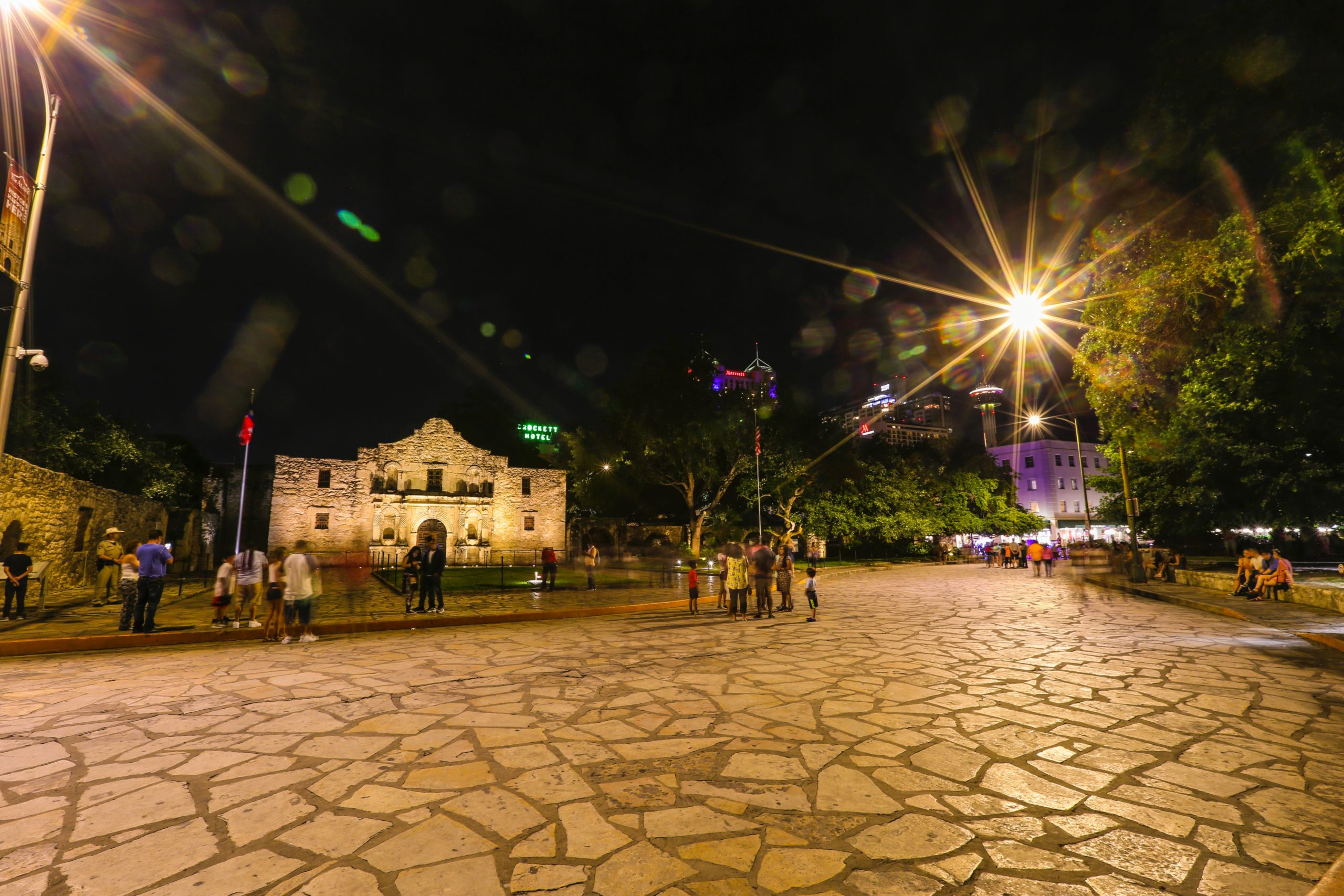
The Alamo – San Antonio, Texas
The Alamo is one of the most important historical sites in the United States. The mission and fortress were where the 1836 Battle of Alamo went down when the Mexican army overtook Texas independence fighters after a 13-day siege. The defeat fueled a desire for revenge and inspired people to join the Texian army; this eventually led to Texans defeating the Mexican army nearly two months later and ending the rebellion. You can go on self-guided tours or choose to tour with an expert guide who will share fascinating facts about the mission, fortress, various rulers, and the Texas Revolution.
Fun fact: The Alamo is one of the most popular tourist attractions in Texas, with over 2.5 million people visiting it each year.
10. Jamestown – Williamsburg, Virginia
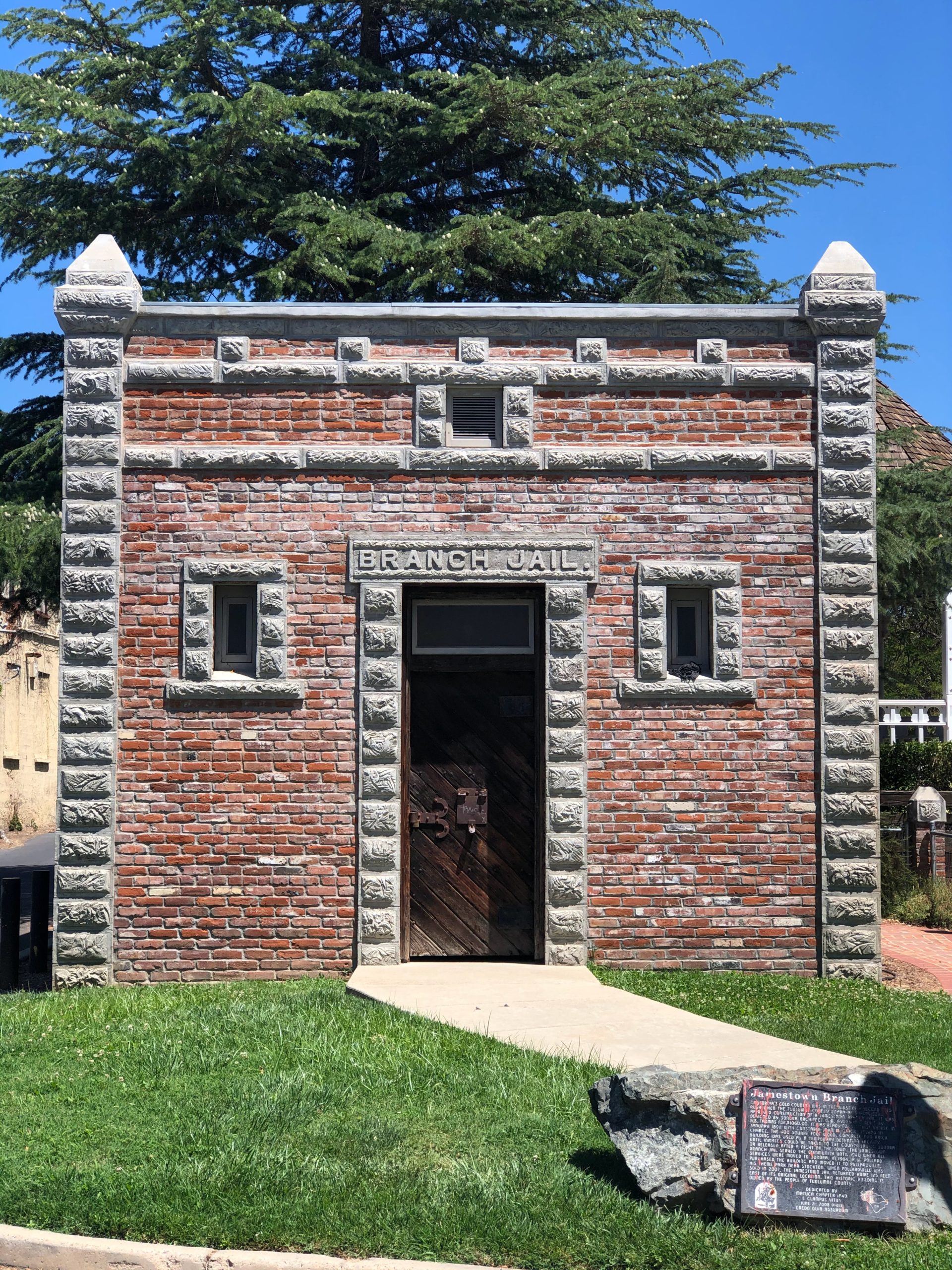
Jamestown – Williamsburg, Virginia
The first set of English settlers in America landed in Jamestown in 1607, thereby changing the path of the nation. It was here that they built the first permanent English colony, and though that no longer stands, visitors can explore an almost-exact reconstruction. The living history museum also has recreations of the ships that brought the first settlers, a Powhatan Indian village, and a colonial fort.
Fun fact: The first settlers comprised 104 men and boys, no women or young girls.
11. Boston Tea Party Ships & Museum – Boston, Massachusetts
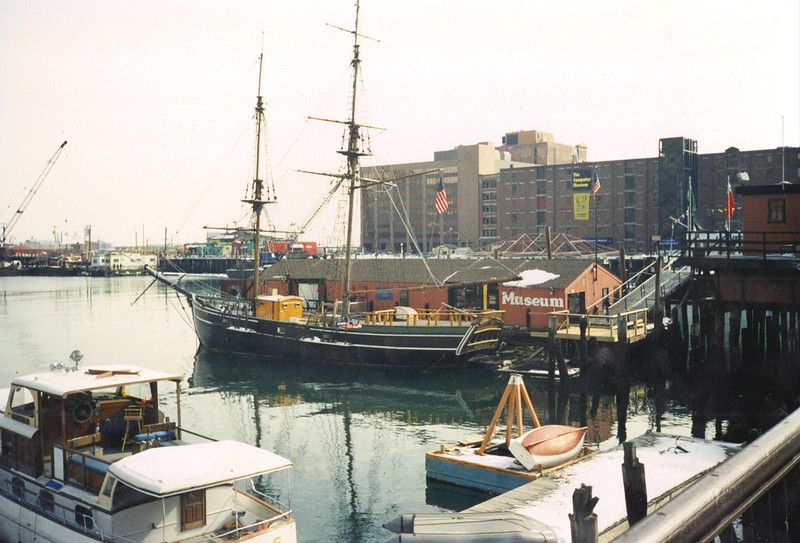
Boston Tea Party Ships & Museum – Boston, Massachusetts
Boston has a lot of historical attractions and the Boston Tea Party Ships & Museum is one of the most visited ones. The entire family can learn about the famous Boston Tea Party protest and the events that led up to the revolution. Keep an eye out for the fascinating Robinson Tea Chest, the only one remaining from 1773.
Fun fact: They reenact a colonial town meeting and visitors can “dump tea” on the ship.
12. Graceland – Memphis, Tennessee
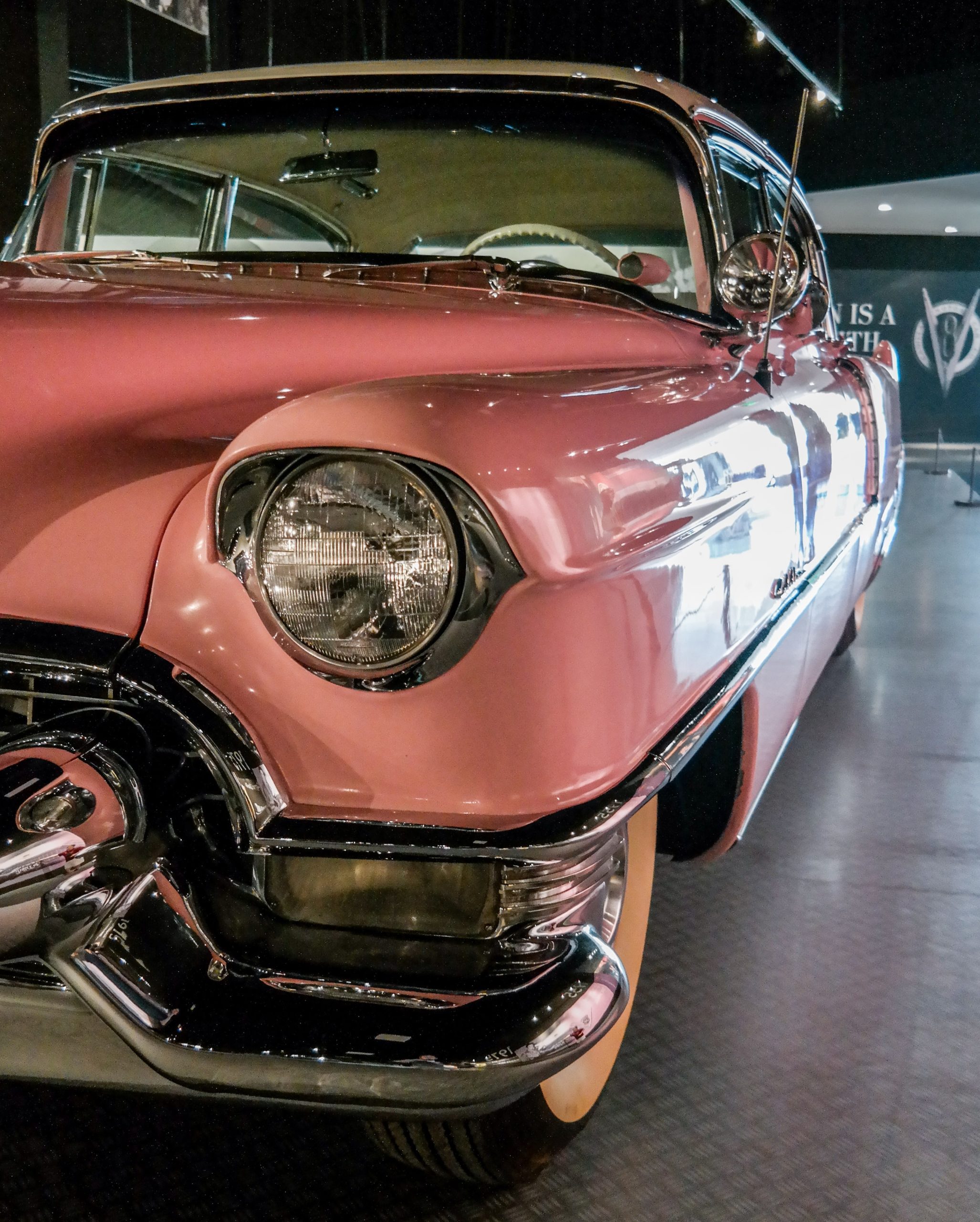
raceland – Memphis, Tennessee
So many different aspects shaped America’s rich history and it’s no doubt that music is one of them. The Rock ‘n’ Roll era was greatly impacted by none other than the King of Rock himself, Elvis Presley. Graceland is the entertainer’s former mansion home converted to a museum and memorial filled with personal artifacts as well as those reflecting musical history and its impact on our country.
Fun fact: Graceland is the second most visited home in the United States, only surpassed by the White House.
13. Mount Rushmore – Keystone, South Dakota
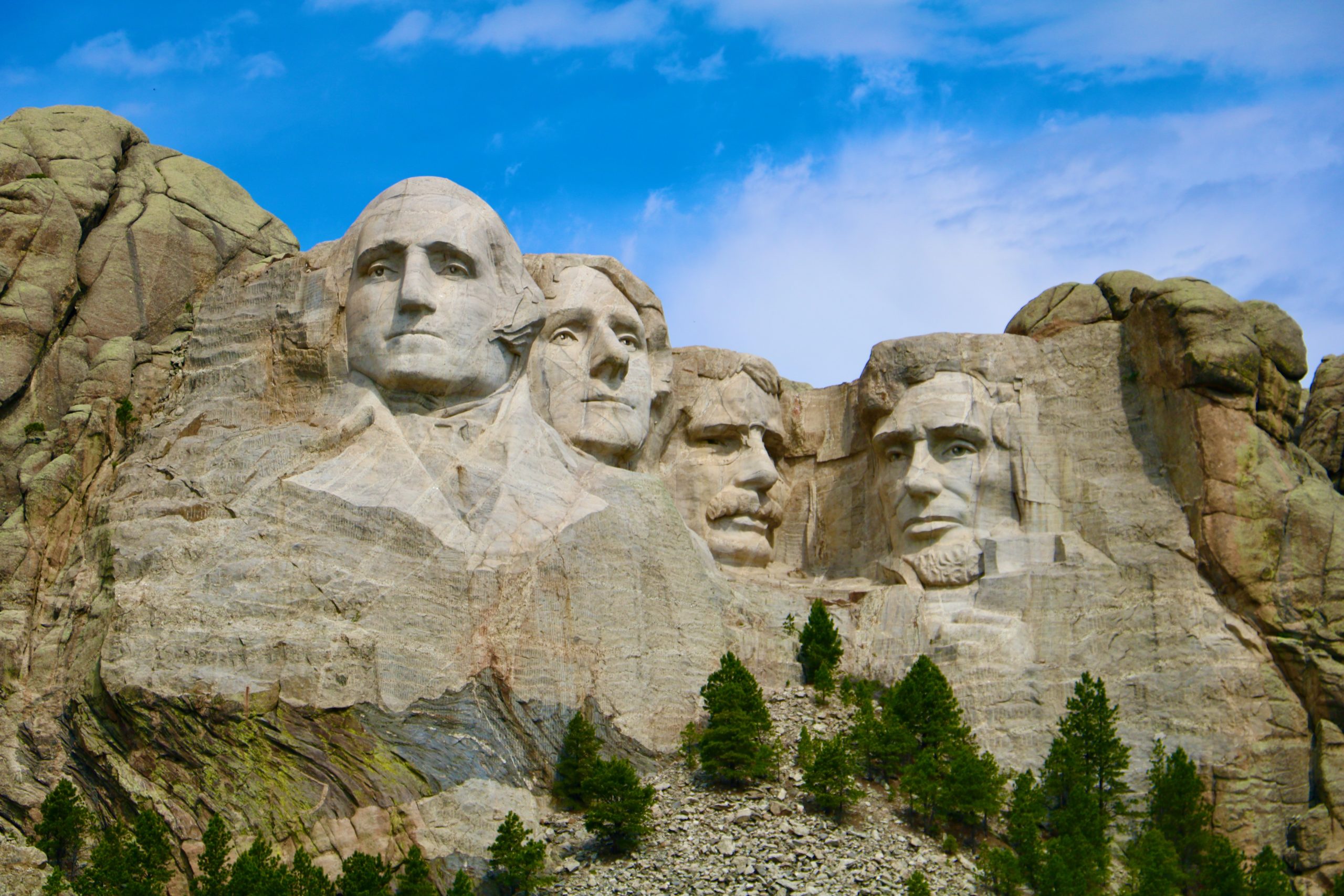
Mount Rushmore – Keystone, South Dakota
Mount Rushmore is one of the most recognized historical attractions, not only in the US but internationally as well. The faces of Abraham Lincoln, George Washington, Theodore Roosevelt, and Thomas Jefferson carved into stone have been on the face of many postcards, billboards, advertisements, and more. Visit the majestic tourist destination for yourself; rent an audio tour wand and see how this respected vision was made possible.
Fun fact: The presidents’ faces on Mount Rushmore are over 60 feet high.
14. Alcatraz Island – San Francisco, California
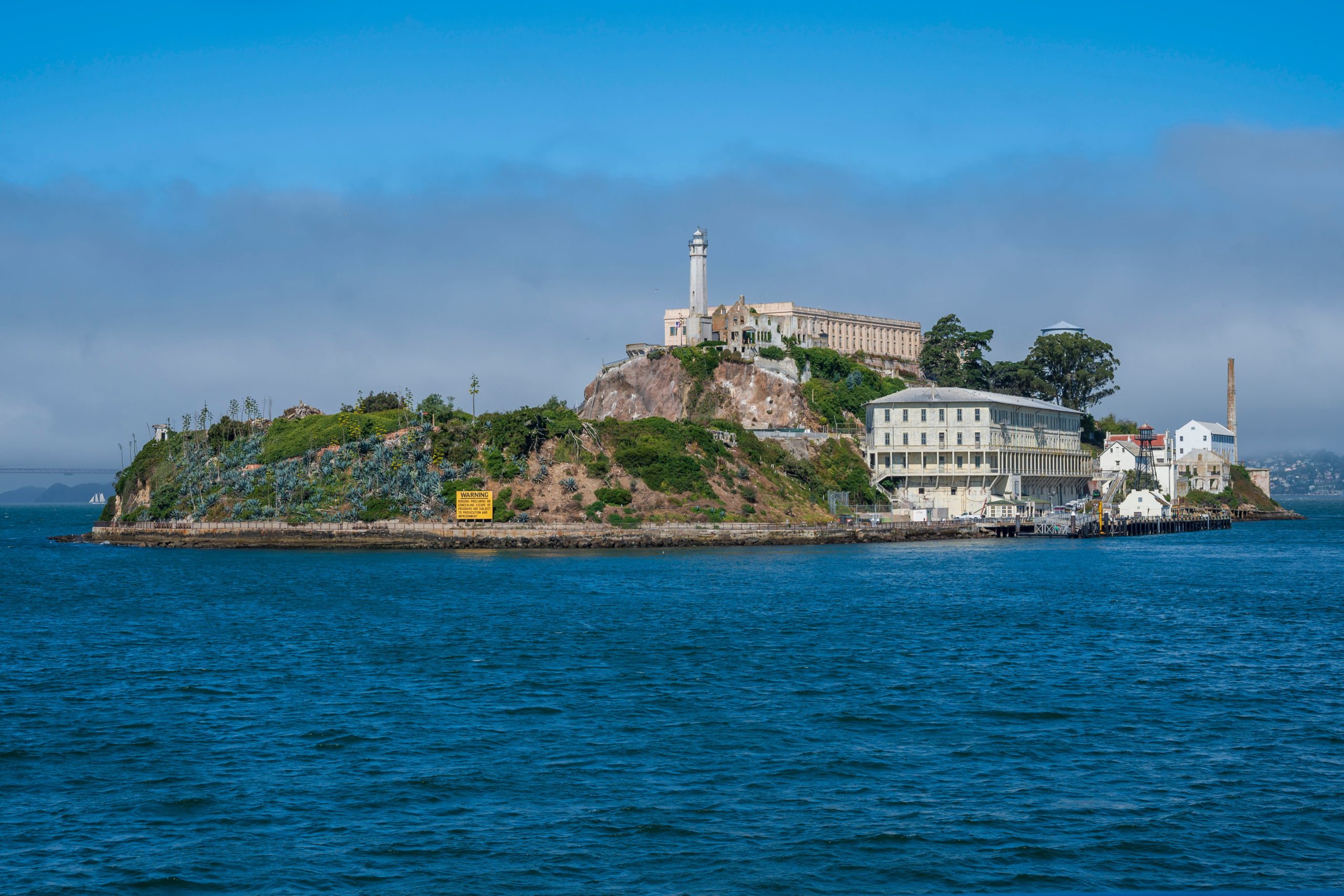
Alcatraz Island – San Francisco, California
Not all historical attractions in the US had positive impacts on the country; Alcatraz Island is one such destination that should be on everyone’s list nonetheless. A former fort and federal prison, the 22-acre Alcatraz Island has a complicated and interesting military history before it housed some of America’s most famous inmates.
Fun fact: Notorious inmates include Al Capone, “Machine Gun” Kelly, and Harvey Bailey.
15. Freedom Trail – Boston, Massachusetts
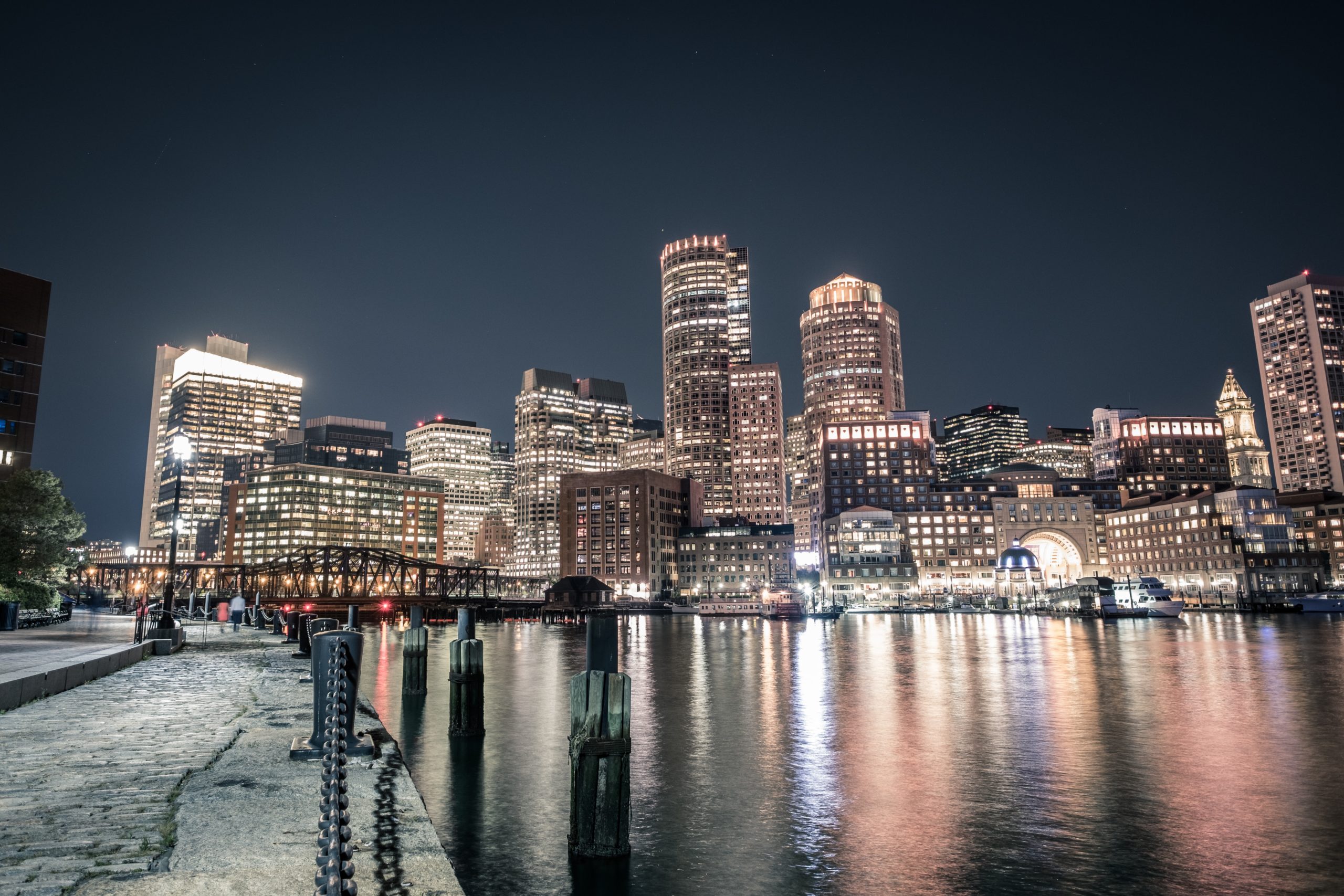
Freedom Trail – Boston, Massachusetts
The Freedom Trail in downtown Boston is a 2.5-mile stretch that passes several historical sites. Walk the trail to see the USS Constitution, the Old State House, the Old South Meeting House, and more. You’ll also pass the Granary Burying Ground where Paul Revere, Samuel Adams, and other greats are buried.
Fun Fact: There are 16 different places that are important to American history that are located on the trail.
16. Paul Revere House – Boston, Massachusetts
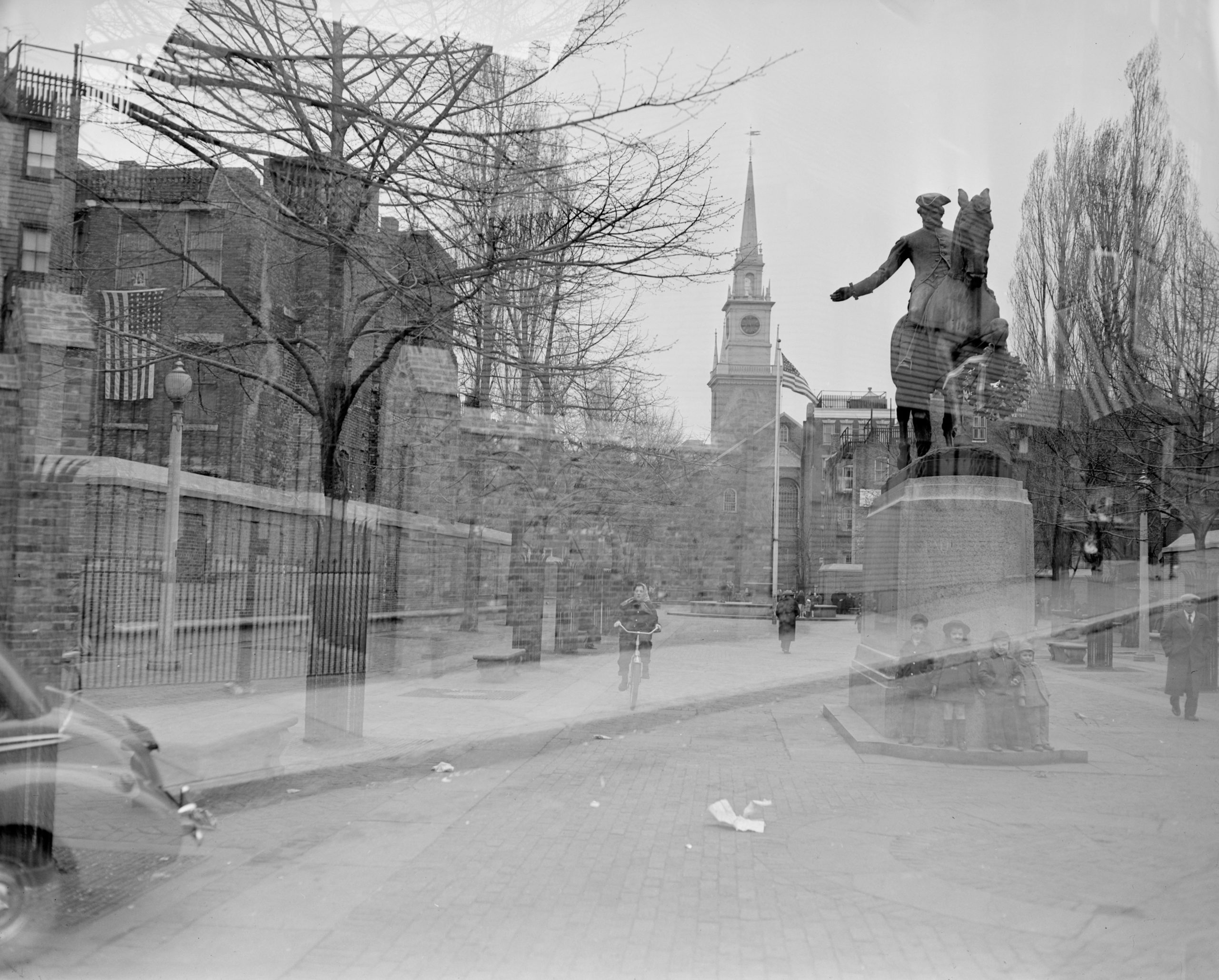
Paul Revere House – Boston, Massachusetts
One of the 16 stops on our previously-mentioned Freedom Trail, the Paul Revere House is worth stopping and exploring. Not only did Paul Revere live there during the American Revolution, but the house itself also dates back to the 17th century and is downtown Boston’s oldest house. Today, the makeshift museum documents and displays his life and actions – including his famous midnight ride!
Fun Fact: Paul Revere was a silversmith by trade and used his skills to assist in amateur dentistry.
17. National Mall – Washington, D.C.
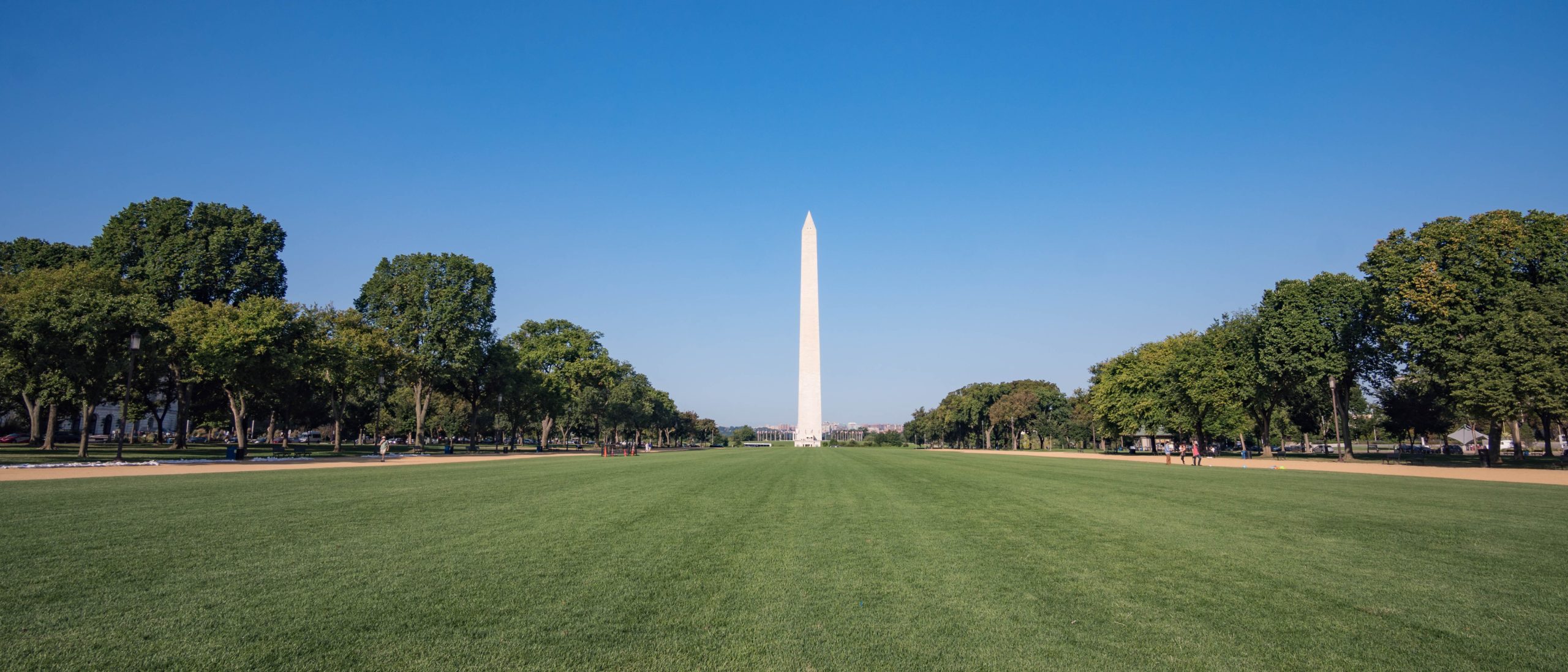
National Mall – Washington, D.C.
The National Mall is the long stretch of grassy field situated right in the middle of some of the most famous monuments in the country. Grab a blanket, have a DC-style picnic complete with a hot dog and spend a day exploring the Vietnam Veterans Memorial, the Lincoln Memorial, the Reflecting Pool, the Washington Monument, and more.
Fun fact: Maintenance of the National Mall requires over 10 tons of grass seed every year.
18. National Museum of American History – Washington, D.C.
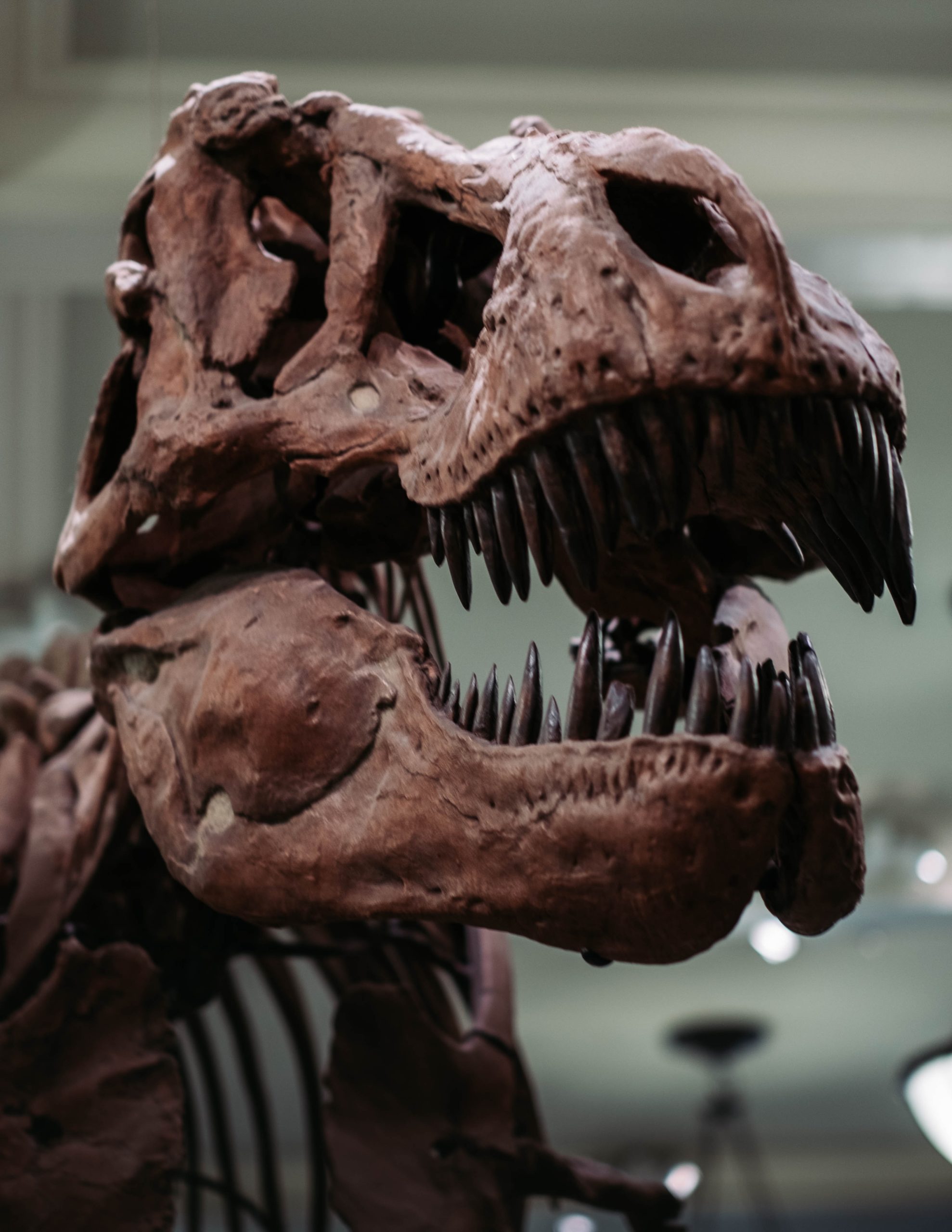
National Museum of American History – Washington, D.C.
This Smithsonian-run institution is a crowd favorite; the National Museum of American History has exhibits on several different aspects of American culture and history, from science and politics to entertainment and the military. Keep your eyes peeled for the display of first ladies’ dresses and the lunch counter where the Greensboro civil rights sit-in took place.
Fun fact: The museum houses over 1.8 million objects.
19. National Museum of African American History and Culture – Washington, D.C.

National Museum of African American History and Culture – Washington, D.C.
The National Museum of African American History and Culture is a beautiful, fairly new, addition to DC’s many museums. The museum covers the lives of African-Americans in America, from the adversities they faced to their incomparable contributions to America. There are exhibits dedicated to a bible owned by rebellion leader Nat Turner, garments worn by slaves, and more.
Fun fact: Over half of the artifacts on display were donated by American families who preserved their ancestors’ heirlooms.
20. National Museum of the American Indian – Washington, D.C.
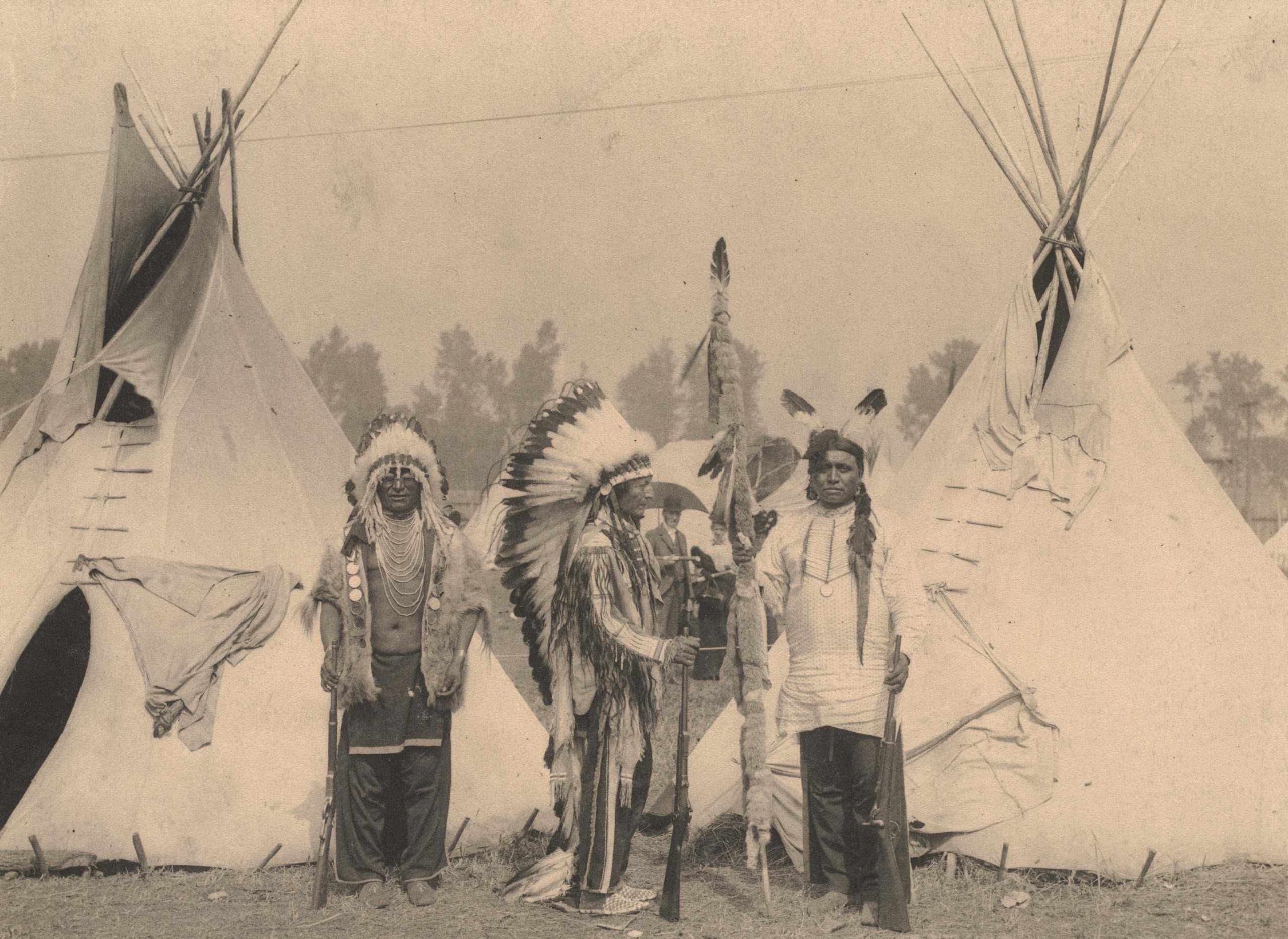
National Museum of the American Indian – Washington, D.C.
Spread between two locations (Washington, D.C. and New York), the National Museum of the American Indian houses one of the largest collections of Native American art anywhere. There are over 800,000 items, artworks, and pictures on display that manage to capture Native American life then and now.
Fun fact: This is the first national museum established that is dedicated exclusively to Native Americans.
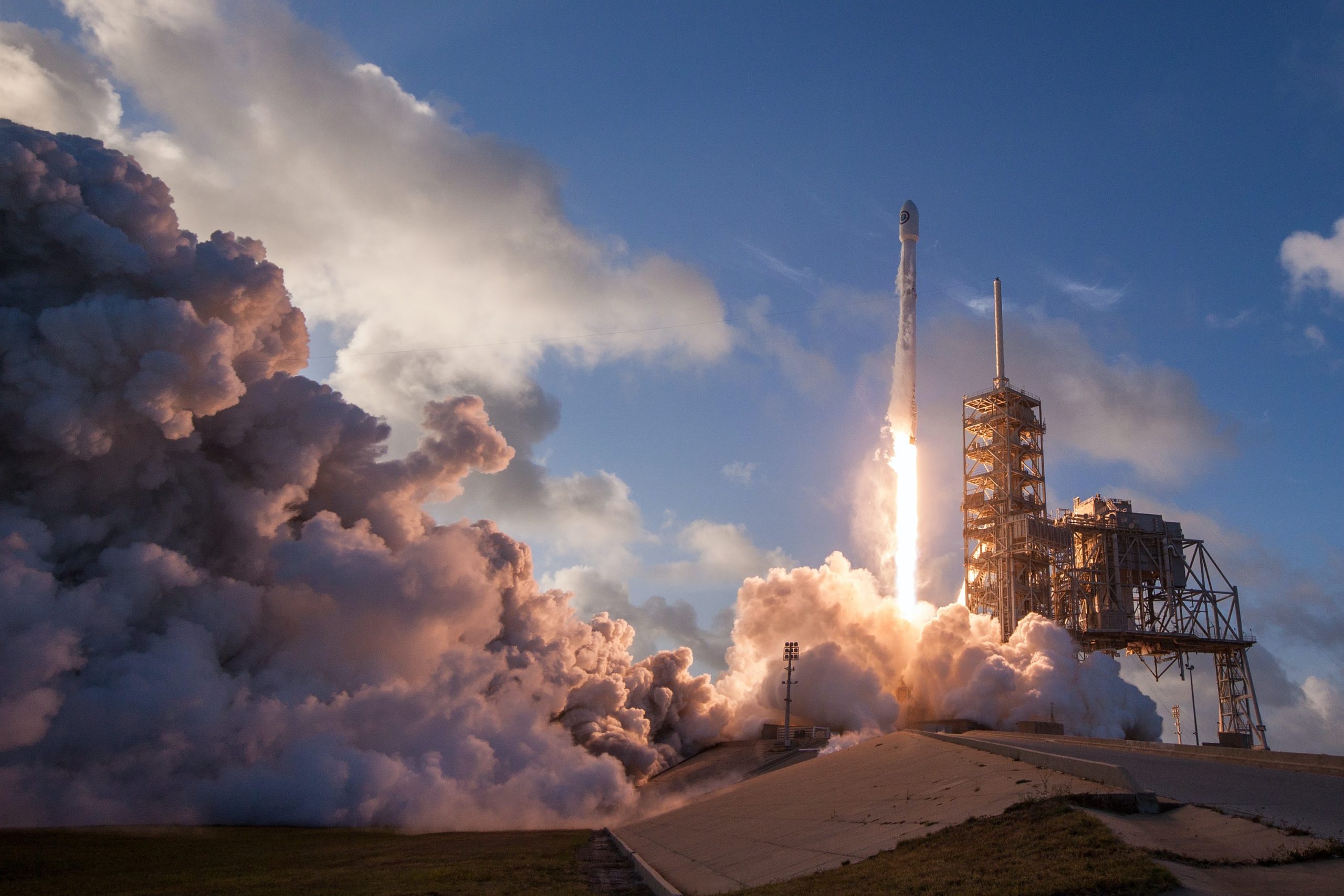
Kennedy Space Center – Cape Canaveral, Florida
NASA’s primary launch center, the Kennedy Space Center is a must-visit for anyone interested in space, NASA, or rockets. While they do launch rockets from there which visitors can come to watch, it’s still worth a visit even when there is no launch scheduled. Take your time exploring the launch site of the famous Apollo 11 that changed how we explore space forever.
Fun fact: The Kennedy Space Center is the only operating space shuttle site in the nation.
22. Grand Canyon – Grand Canyon National Park, Arizona
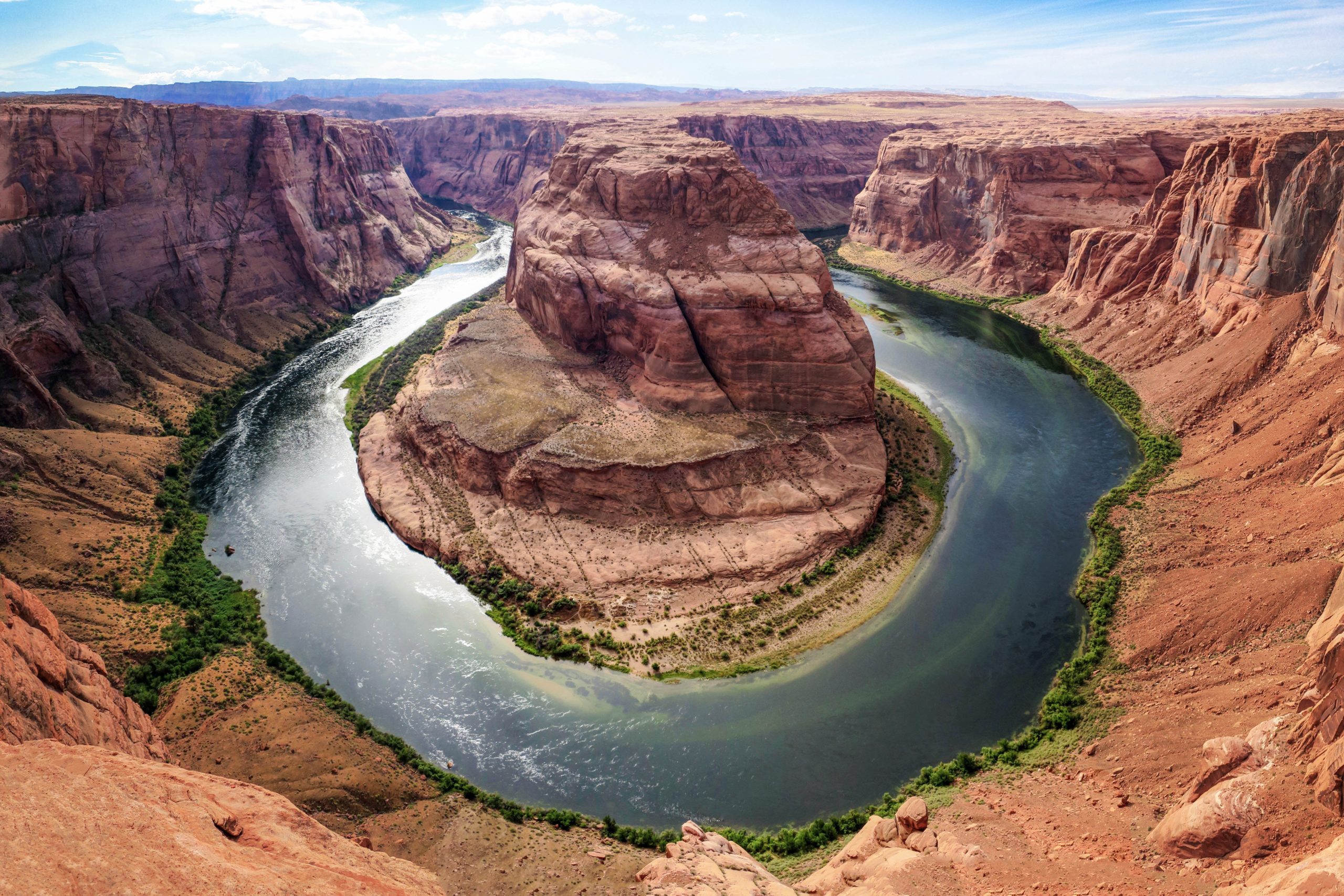
Grand Canyon – Grand Canyon National Park, Arizona
Combining history and breathtaking natural beauty, a visit to the Grand Canyon is a must for history buffs & outdoor lovers. Start at the Visitor Center where you can watch movies about the canyon and see historic artifacts. Sign up for a guided tour; they have them for everything from local geology to more adventurous hiking and biking tours.
Fun fact: Spanning nearly 2,000 square miles, the Grand Canyon is bigger than the entire state of Rhode Island.
23. Yellowstone National Park – Yellowstone National Park, Wyoming
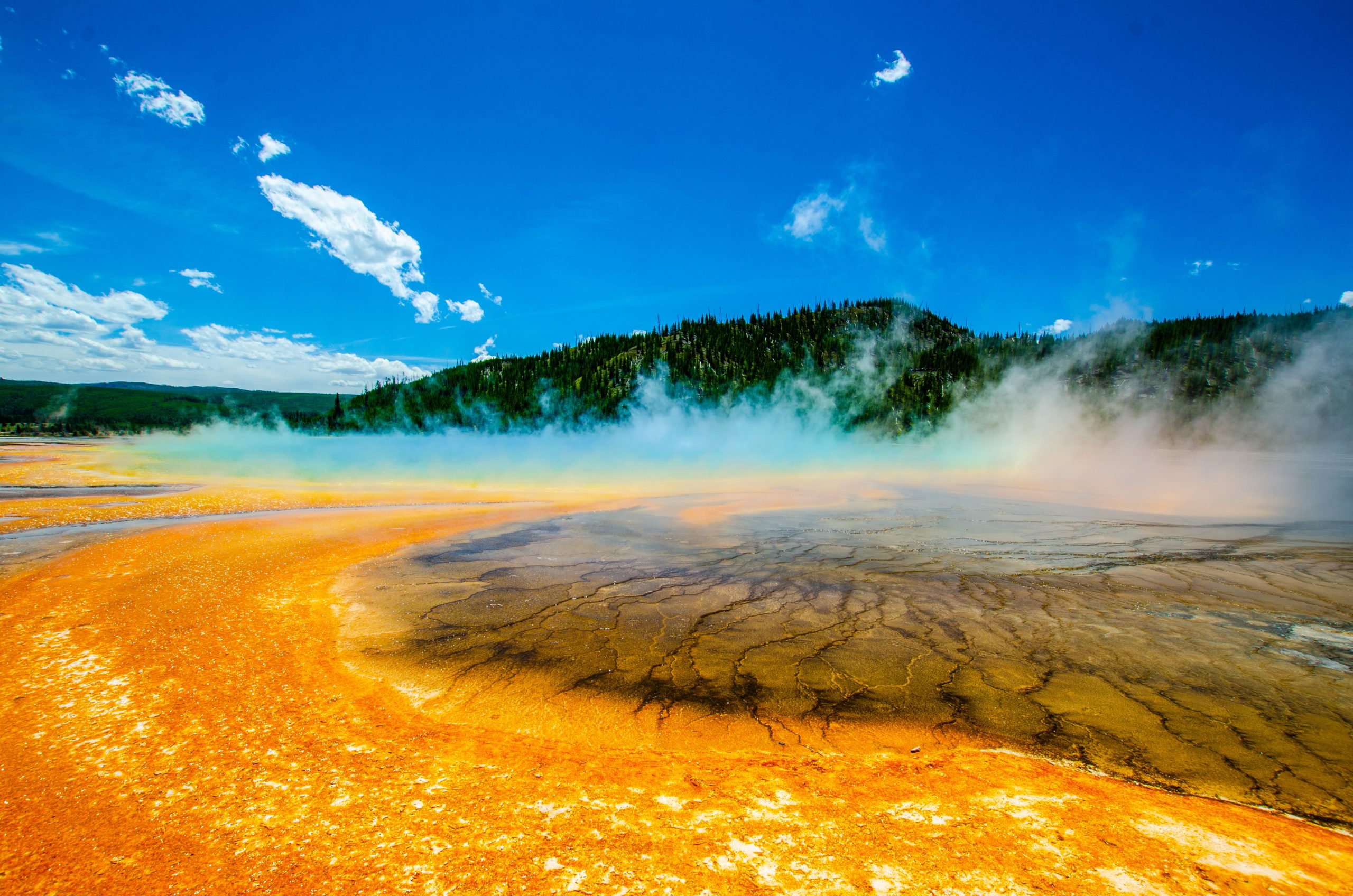
Yellowstone National Park – Yellowstone National Park, Wyoming
Learn the story of America’s topography over the years while hiking across Wyoming’s beautiful Yellowstone National Park. The park was the first-ever designated national park, done so by President Ulysses S. Grant in 1872.
Fun fact: Be sure to visit the Old Faithful geyser which erupts every hour, give or take.
24. American Civil War Museum – Richmond, Virginia
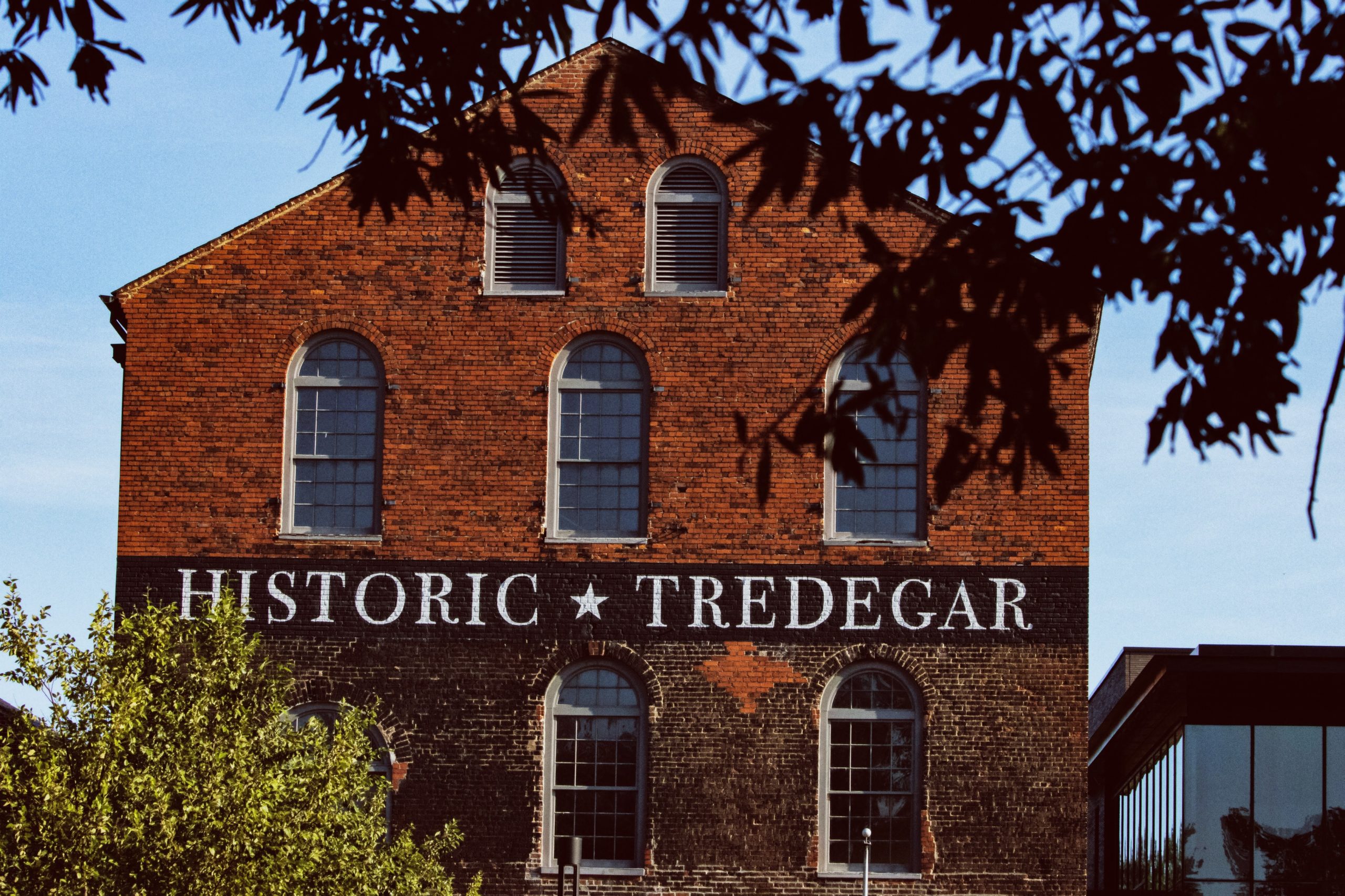
American Civil War Museum – Richmond, Virginia
The American Civil War Museum in Richmond tells the story of one of our country’s most influential events, the result of which shaped the direction we went in. To this day, several Americans hold opposite opinions on the war and this museum encompasses the perspective of all sides. In the museum’s main exhibit you’ll see the viewpoints of civilians, soldiers, women, Native Americans, African Americans, and more.
Fun fact: The museum is composed of multiple sites, Historic Tredegar, White House of the Confederacy, and the Civil War Museum.
25. The United States Holocaust Memorial Museum – Washington, D.C.
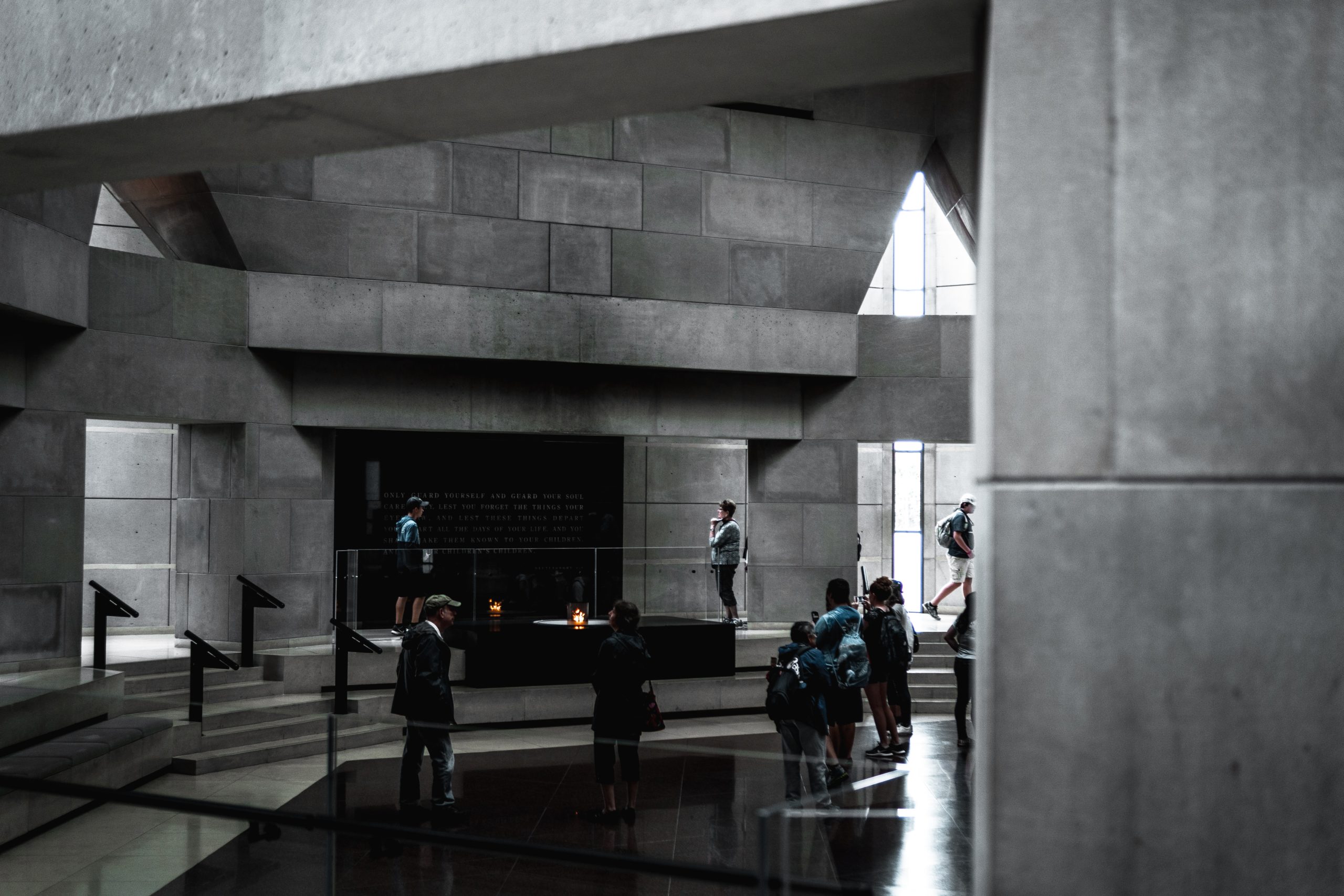
American Civil War Museum – Richmond, Virginia
The holocaust is a sad and significant part of our global history that largely happened overseas, and while this museum tells that story, it also reflects on the role America played – or didn’t play for that matter. It is an important part of our past and will make us reflect on our stances individually and as a nation.
Fun fact: The museum also focuses on research and studies to address modern-day acts of genocide which still occur all over the world.
26. Fort McHenry National Monument – Baltimore, Maryland
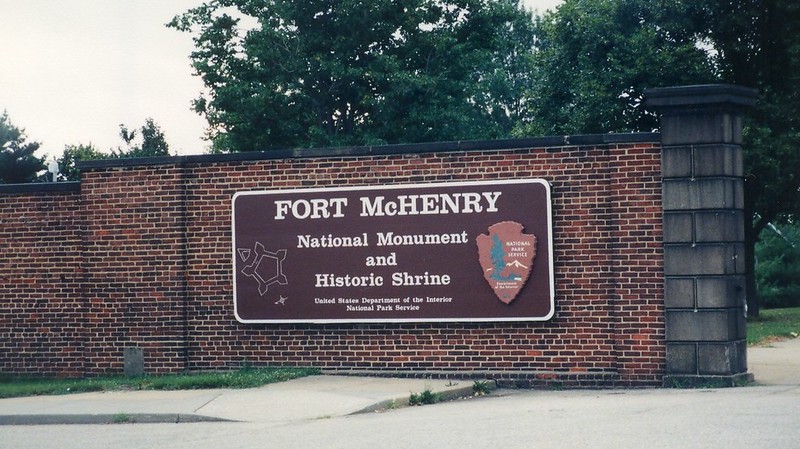
Fort McHenry National Monument – Baltimore, Maryland
Fort McHenry National Monument memorializes the Battle of Baltimore that occurred during the War of 1812. It was on this battlefield that the raising of the flag motivated Francis Scott Key to write the Star-Spangled Banner. Learn about the battles that occurred and about the national anthem in a fun and educational environment.
Fun fact: The Star-Spangled Banner was originally an anthem for Union troops.
27. The Liberty Bell Center – Philadelphia, Pennsylvania
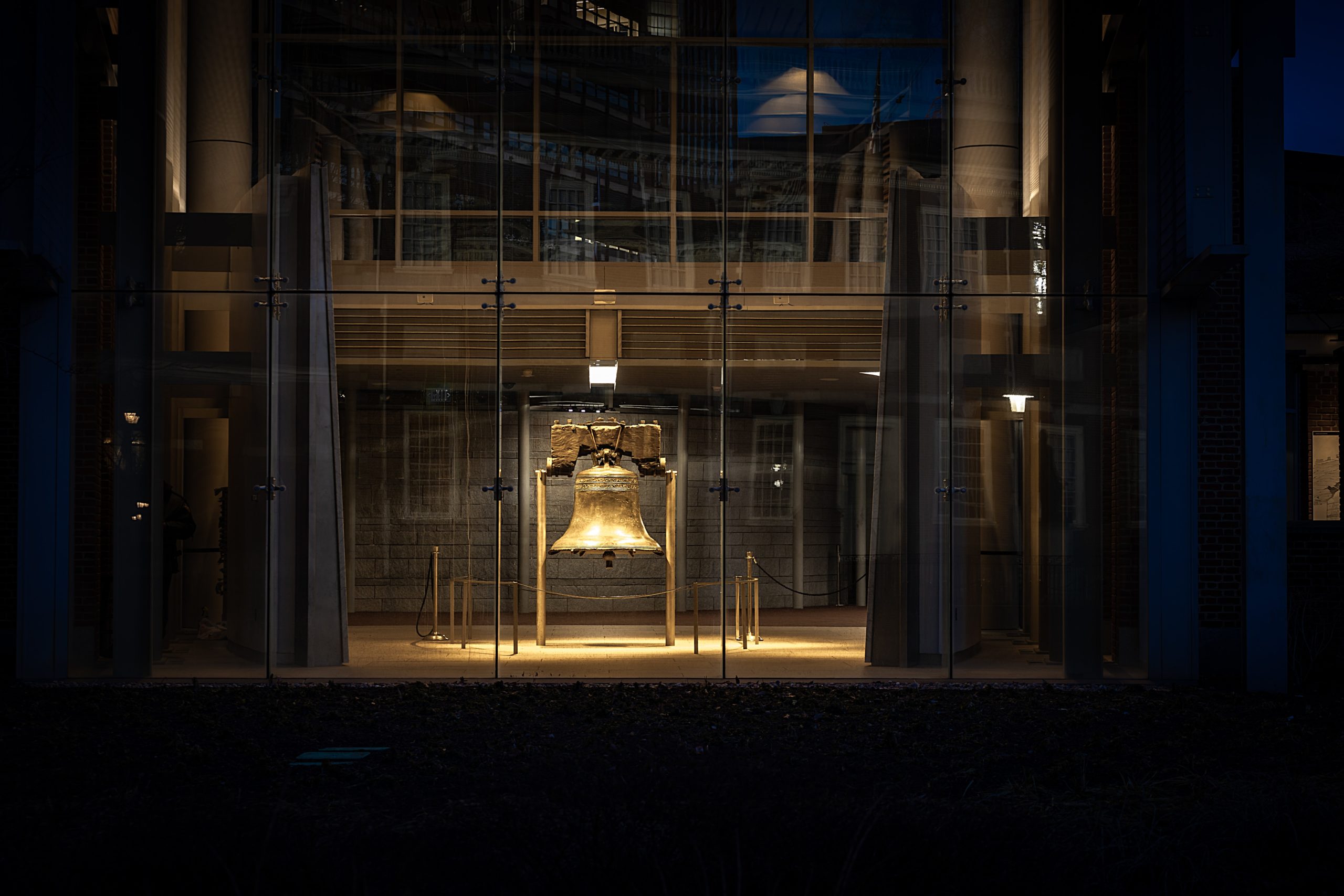
The Liberty Bell Center – Philadelphia, Pennsylvania
A symbol of freedom, the Liberty Bell is one of the most recognized landmarks in the nation. You’ve seen it on postcards, stamps, movies, and throughout history books. Visit the iconic landmark in all its glory, crack and all, at the Liberty Bell Center in Philadelphia.
Fun fact: The Liberty Bell was originally called the State House Bell.
28. Capitol Building – Washington, D.C.
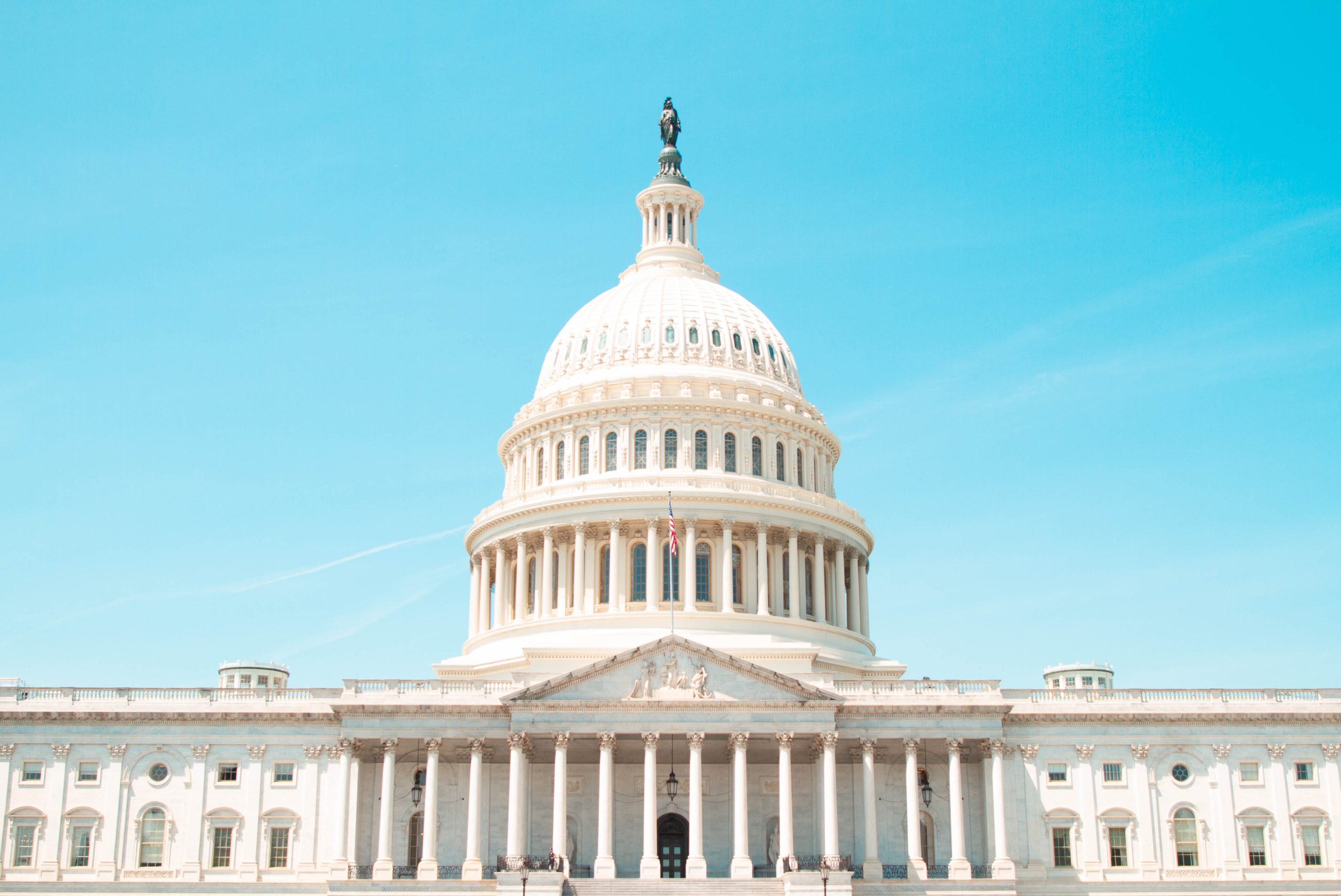
Capitol Building – Washington, D.C.
Watch Congress in action at the Capitol Building, an incomparable pillar of our nation’s government. You’ll be able to see them in action while also touring the National Statuary Hall, the Crypt, and Galleries of the Senate and House.
Fun fact: The design of the Capitol Building is the result of a nationwide contest with a grand prize of $500 and a plot of land in the city.
29. The Supreme Court of the United States – Washington, D.C.
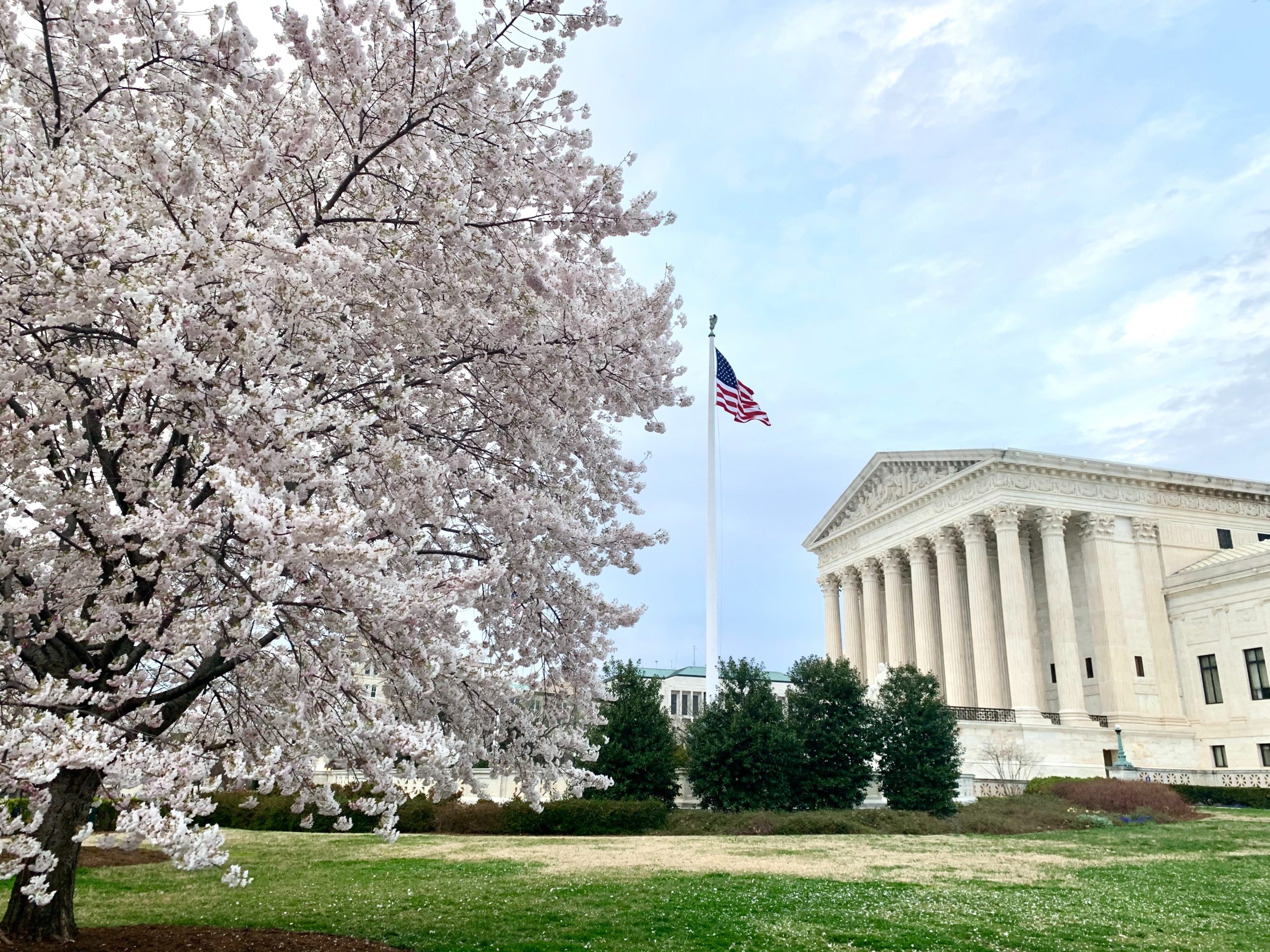
The Supreme Court of the United States – Washington, D.C.
The Supreme Court of the United States is where the Supreme Court justices make critical decisions that affect each American. The stunning building is one of the architectural highlights in the nation’s capital. You can tour the facility yourself, viewing exhibits on former Supreme Court justices, attend public courtroom sessions, and sit in on courtroom lectures.
Fun fact: Each justice shakes hands with the others before they take their seat. This act is called the “conference handshake” and has been happening since the late 1800s as a way of reminding them that even if they have differing opinions, they share a common purpose.
30. Preservation Hall – New Orleans, Louisiana
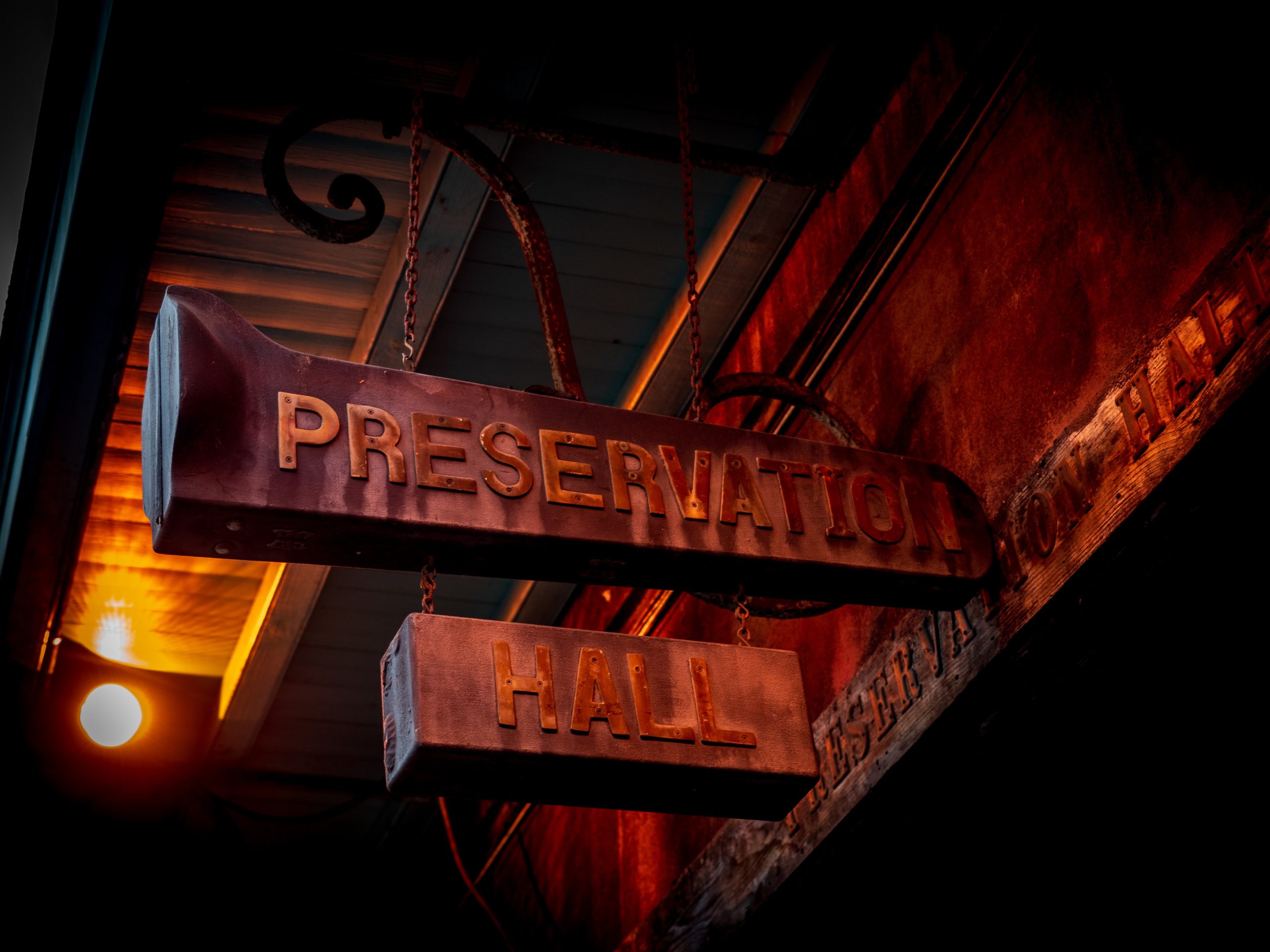
Preservation Hall – New Orleans, Louisiana
As we established with our listing of Graceland earlier, music played an integral role in America’s history and culture. Preservation Hall is a music venue that opened in the 1960s and is considered the home of jazz. They host multiple shows throughout the year and are a great place to experience big brass bands, Cajun culture, and live jazz.
Fun fact: The building structure itself has been used as a residence, tavern, inn, art gallery, and photo studio before becoming a permanent live music venue.
31. The National Museum of the United States Air Force – Dayton, Ohio

The National Museum of the United States Air Force – Dayton, Ohio
The official museum of the United States Air Force, this national museum in Dayton, Ohio is a favorite with everyone in the family no matter their age. The collection of planes and the enthralling stories of military aviation throughout the years is enough to excite any history buff.
Fun fact: The museum has thousands of artifacts including missiles and uniforms from WWII and several other wars.
32. Henry Ford Museum of American Innovation – Dearborn, Michigan
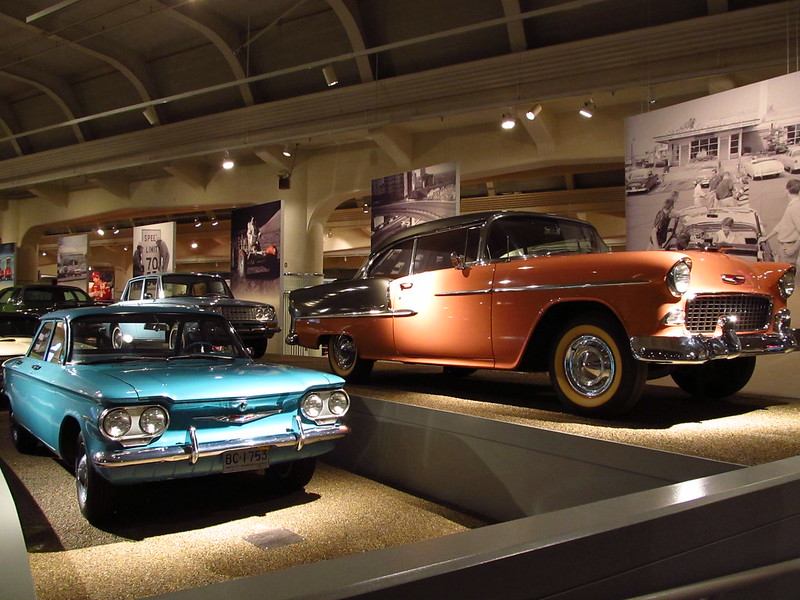
Henry Ford Museum of American Innovation – Dearborn, Michigan
Love history and cars? Look no further than the Henry Ford Museum of American Innovation in Dearborn, Michigan. The history of the American automobile and the transportation industry is housed in this museum through an array of artifacts, exhibits, photographs, and other memorabilia.
Fun fact: Their Driving America exhibit has so many different vehicles from the oldest surviving American car to one of the first hybrids.
33. Museum of the American Revolution – Philadelphia, Pennsylvania
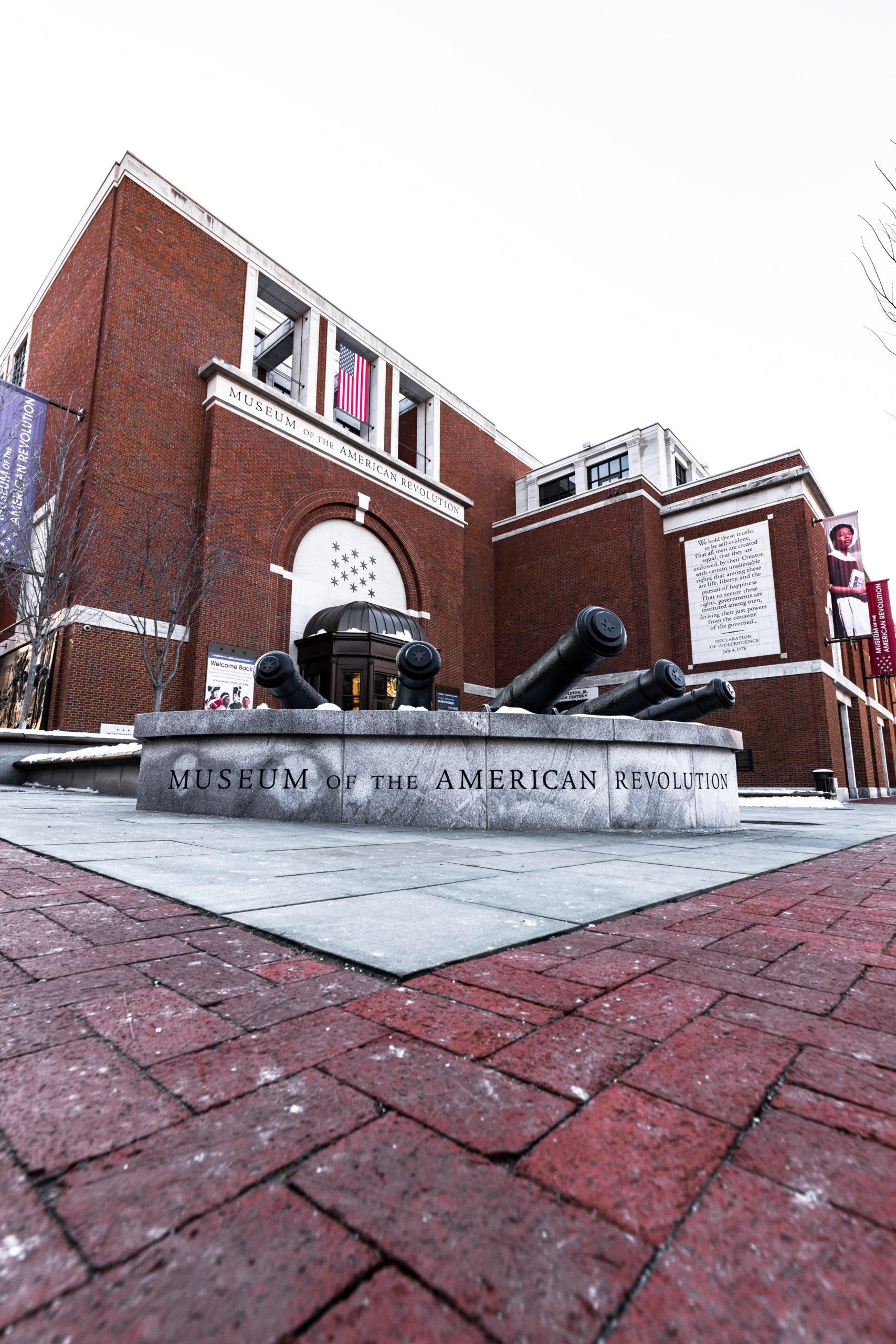
Museum of the American Revolution – Philadelphia, Pennsylvania
The Museum of the American Revolution tells the stories of the Revolutionary War from the perspective of the people themselves. The collection includes diary entries, letters, and personal items from the time of the Revolutionary War. Don’t miss out on amazing artifacts such as the first newspaper printing of the Declaration of Independence, a 13-star flag, and a tent that belonged to George Washington.
Fun fact: There were Native Americans that fought on the American side as well as the British side of the war.
34. Smithsonian American Art Museum – Washington, D.C.

Smithsonian American Art Museum – Washington, D.C.
Popularly known by its former name, the National Museum of American Art, this museum walks you through the many art movements in our history. It’s one the largest collections in the world with everything from paper sculpture to impressionist paintings, from the colonial era to the present day.
Fun fact: Keep an eye out for temporary and visiting exhibits from all over the US.
35. Ponce de Leon’s Fountain of Youth Archaeological Park – St. Augustine, Florida
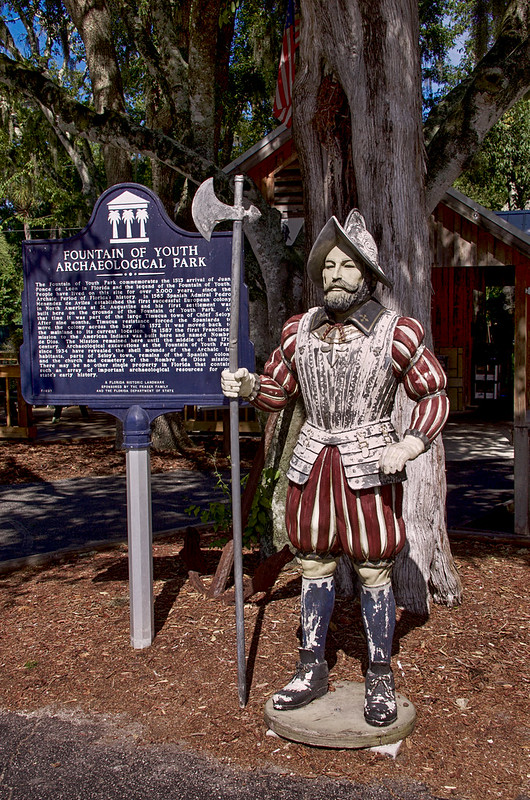
Ponce de Leon’s Fountain of Youth Archaeological Park – St. Augustine, Florida
Spanish explorer Ponce de Leon came to one of the oldest cities in America, St. Augustine, in 1565. The park is one of the first colonized sites and has several structures built in unique Spanish-style architectural influences that they brought with them. While the Fountain of Youth is the main attraction, don’t miss exploring the on-site Spanish Military Hospital Museum.
36. Arlington National Cemetery – Arlington, Virginia
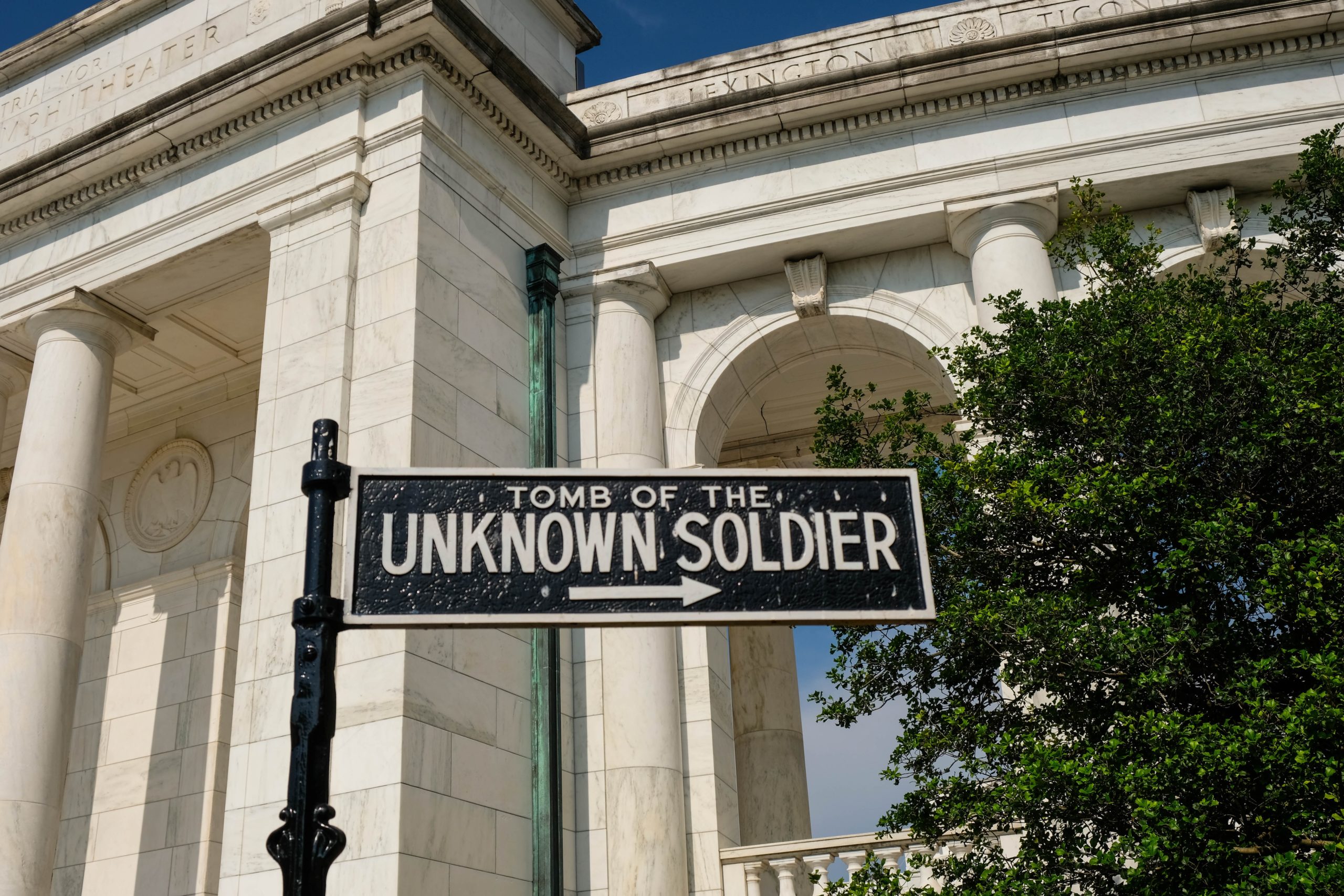
Arlington National Cemetery – Arlington, Virginia
Many of us know of the Arlington National Cemetery, have seen it in news broadcasts, or even had the misfortune of having a loved one buried there. But very few of us have taken the time to visit and pay our respects while taking in its historical value. The cemetery holds the graves of over 400,000 American soldiers as well as the Tomb of the Unknown Soldier, which is the final resting place of unknown soldiers from multiple wars. Walk around, watch the changing of the guard ceremony, and take in all of the sobering history of our nation.
Fun fact: Arlington National Cemetery houses many notable graves including those of William Howard Taft, Thurgood Marshall, and John F. Kennedy.
37. Mark Twain House and Museum – Hartford, Connecticut
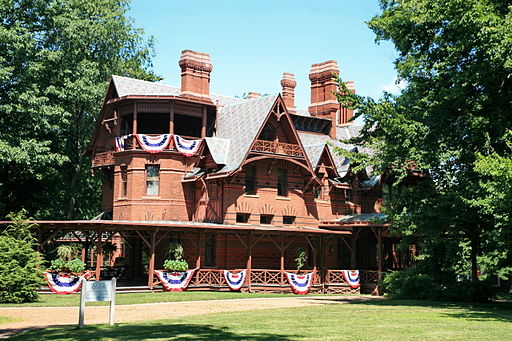
Mark Twain House and Museum – Hartford, Connecticut
Known for famed works such as ‘The Adventures of Tom Sawyer’ and ‘The Adventures of Huckleberry Finn’, American writer Mark Twain is one of the most celebrated authors in the world. The Mark Twain House and Museum is housed in his family home and is a place where he wrote some of his most famous books. Take a guided tour of the home, watch documentaries on his life and works, and see personal items of his on display.
Fun fact: Mark Twain is his alias and his real name is actually Samuel Langhorne Clemens; Twain tried several aliases before settling on this one with names such as Josh and Thomas Jefferson Snodgrass.
38. Fort Sumter – Charleston, South Carolina
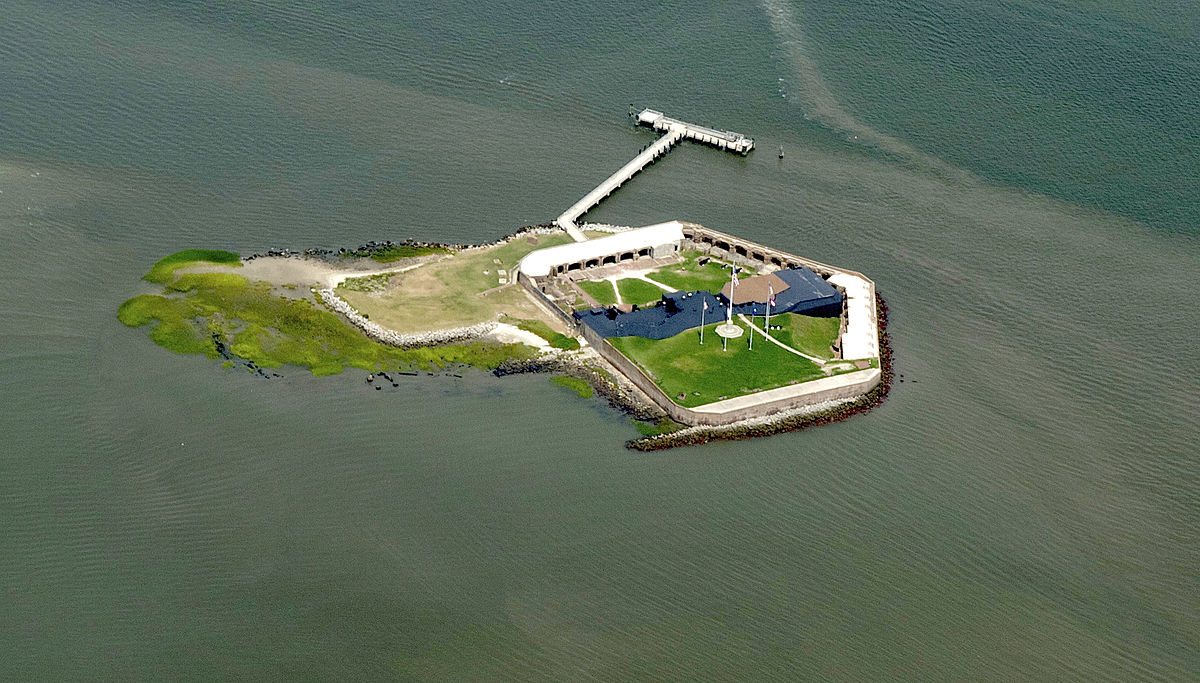
Fort Sumter – Charleston, South Carolina
Fort Sumter is a place to reflect and contemplate on our country’s history and how a single turn of events could change the nation’s course forever. Go on a guided tour to learn more about the site where the first shots of the Civil War were fired as well as slavery in America’s early years.
Fun facts: Fort Sumter was unfinished when the Civil War first began, with large portions of the barracks, quarters, and gun rooms missing.
39. Ellis Island – New York, New York
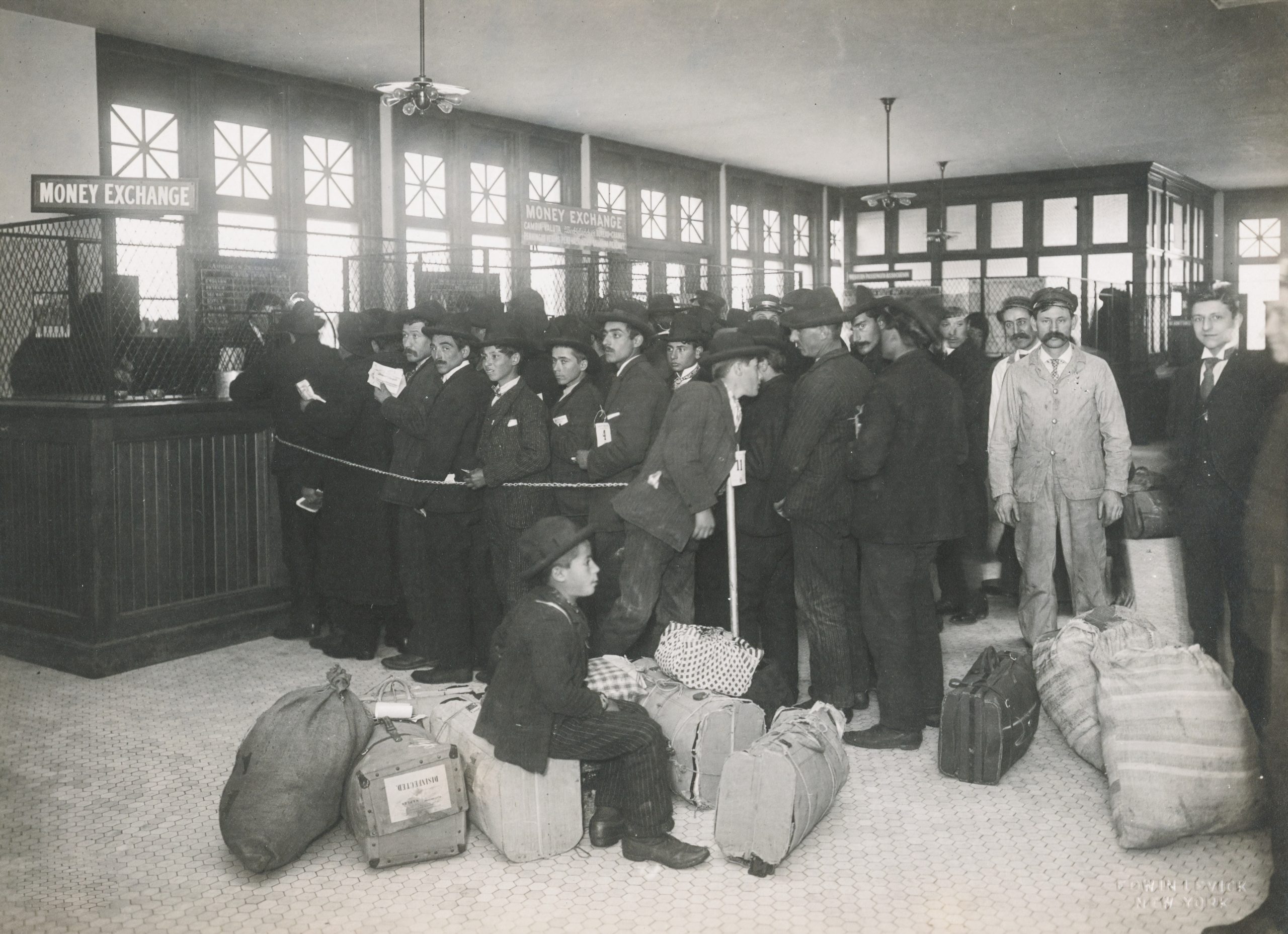
Ellis Island – New York, New York
Not to be confused with Liberty Island where the breathtaking Statue of Liberty resides, Ellis Island was once the busiest immigrant inspection station in the country. Over 12 million immigrants came from all over the world and first landed on Ellis Island; learn about their stories in the museum and American Family Immigration History Center.
Fun fact: Not exactly fun, but Ellis Island was also used for pirate hangings in the early 1800s.
40. The Statue of Liberty – New York, New York
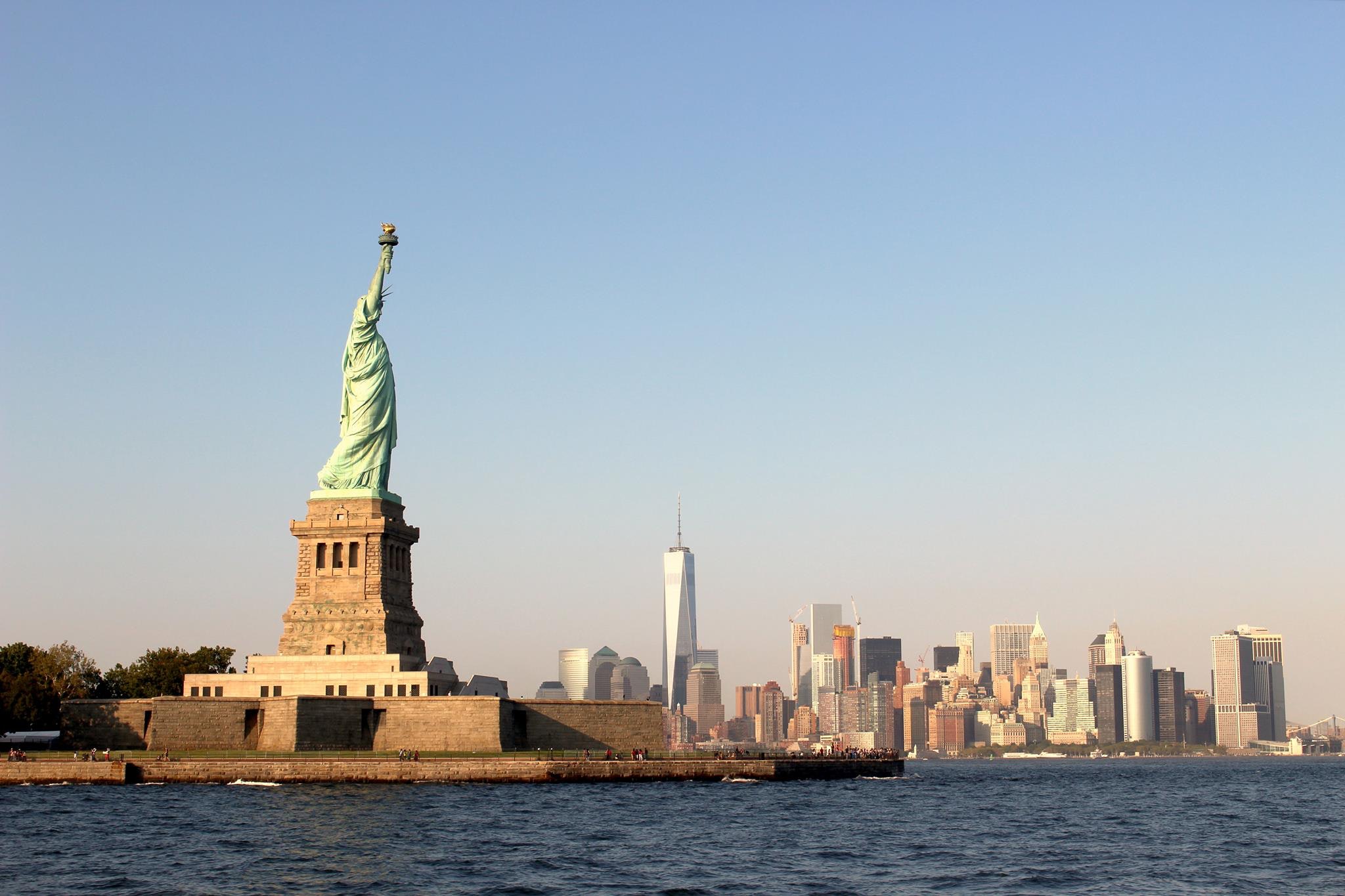
The Statue of Liberty – New York, New York
One of the first places most international visitors want to go to when they come to America is the Statue of Liberty. The statue of our famous green lady standing tall was one of the first sights that many immigrants saw as they came from perilous circumstances to new beginnings. It’s no wonder that even visitors who fly in today want to go there and see the visualization of ‘freedom’ all over the world.
Fun fact: Lady Liberty is struck by lightning an average of 600 times a year.
41. Lincoln Memorial – Washington, D.C.
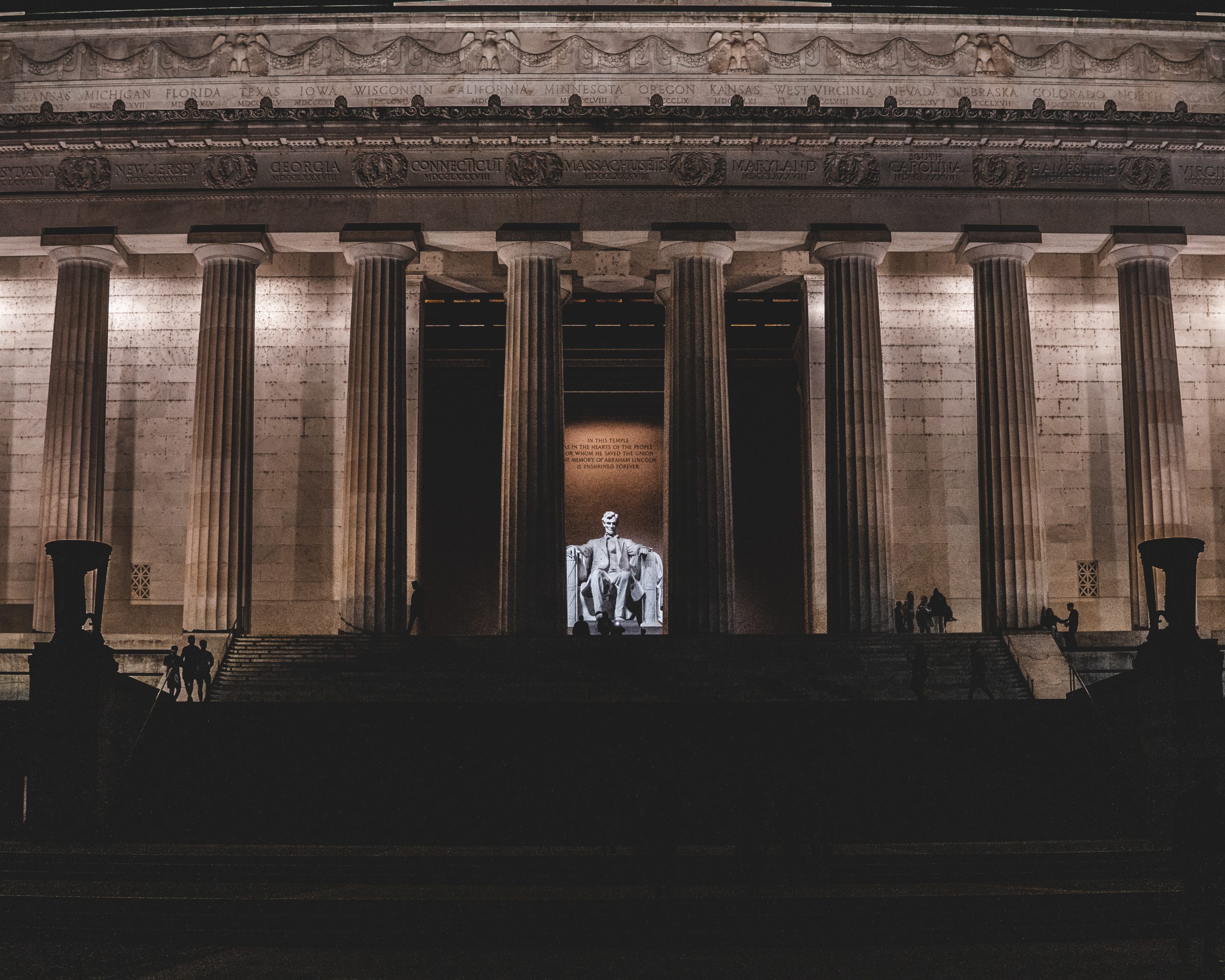
Lincoln Memorial – Washington, D.C.
Go to the Lincoln Memorial and learn about our 16th president as you watch his statue seated and pondering as he looks over the National Mall. The memorial is a symbol of strength and unity and is one of the most photographed sites in Washington, D.C. Pay close attention to features such as the exterior which resembles a Parthenon and the steps leading to the Reflecting Pool.
Fun fact: The original plans for the Lincoln Memorial were supposed to resemble an Egyptian pyramid rather than the Parthenon you see before you today.
42. Independence Hall – Philadelphia, Pennsylvania
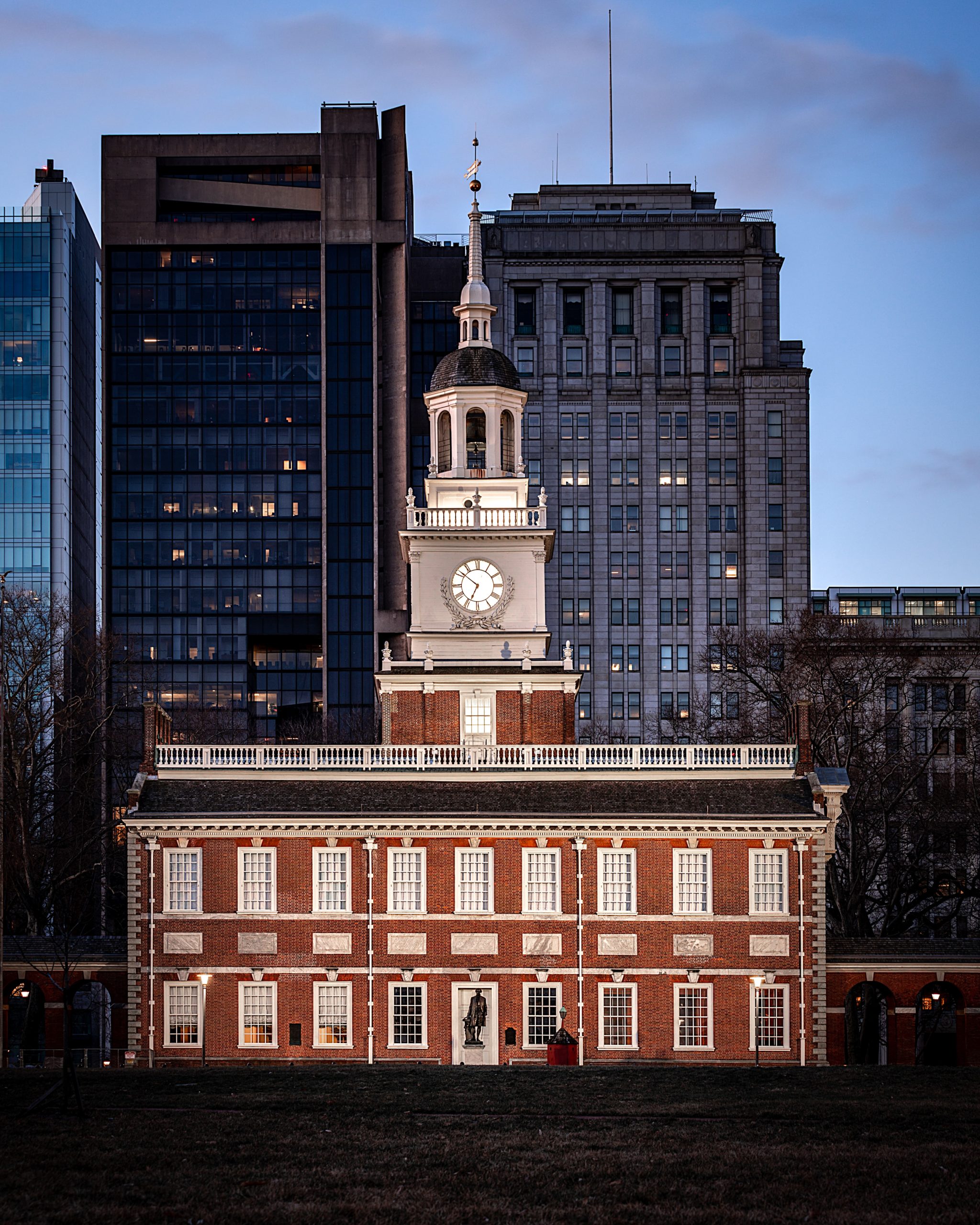
Independence Hall – Philadelphia, Pennsylvania
No list of tourist attractions for history buffs is complete without Philadelphia’s Independence Hall – the official birthplace of US history. The site where the Constitution and the Declaration of Independence were created will leave you in admiration for our nation’s past. There are 40-minute guided tours led by educators with lots of insider knowledge and there’s even an original draft of the Constitution that visitors will be able to see.
Fun fact: Both of the clocks that you see in Independence Hall are not the original; the 40-foot-tall grandfather clock on the building’s west end is a replica and the steeple clock was demolished due to compromised structural integrity and eventually replaced with a different design.
43. Martin Luther King Jr. National Historical Park – Atlanta, Georgia
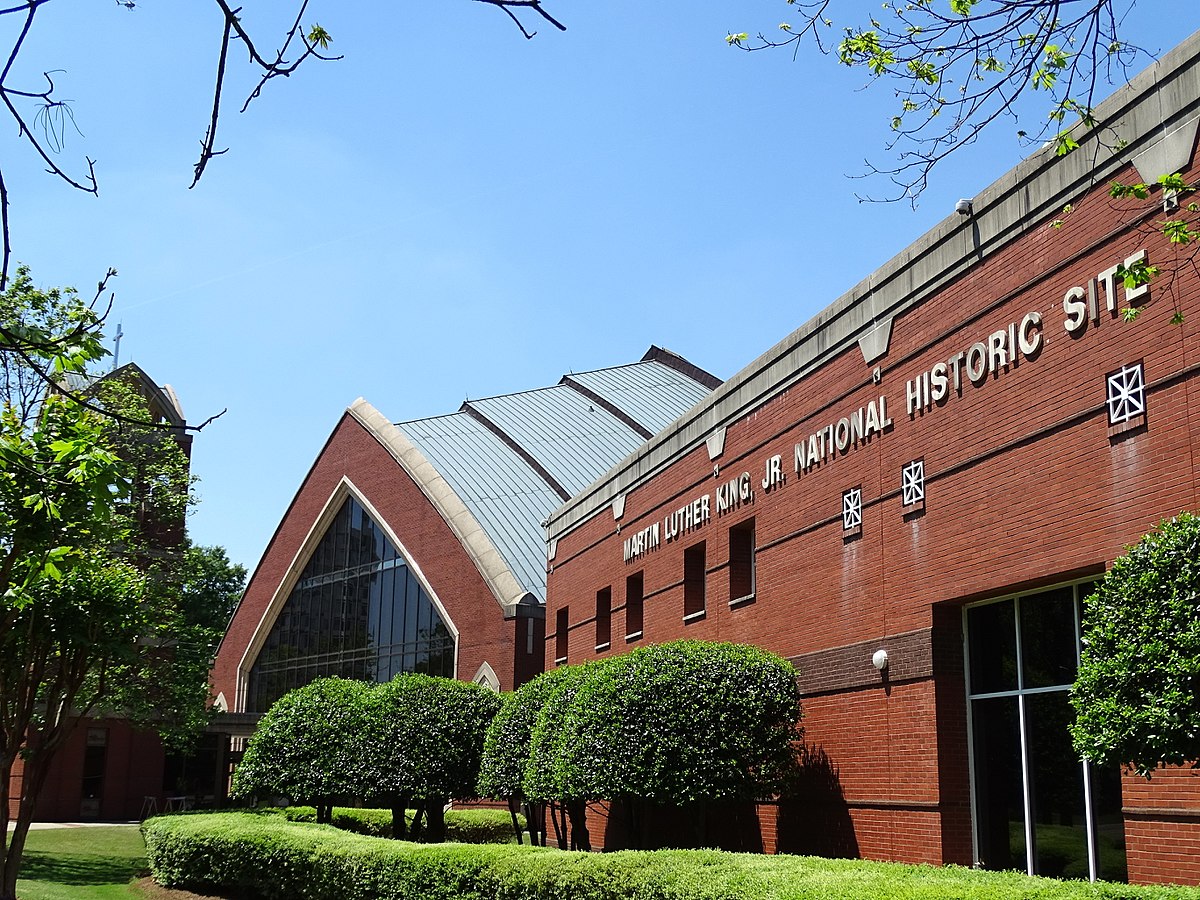
Martin Luther King Jr. National Historical Park – Atlanta, Georgia
Martin Luther King Jr. was one of the nation’s leading civil rights activists and his contributions forever changed people’s perspective on where our country was headed. Comprising several structures, the national historical park encompasses his childhood home, the church where he was baptized, and his final resting place.
Fun fact: Martin Luther King Jr. was actually born Michael King Jr.; his father changed both his and his son’s name when MLK Jr. was five.
44. National Portrait Gallery – Washington, D.C.
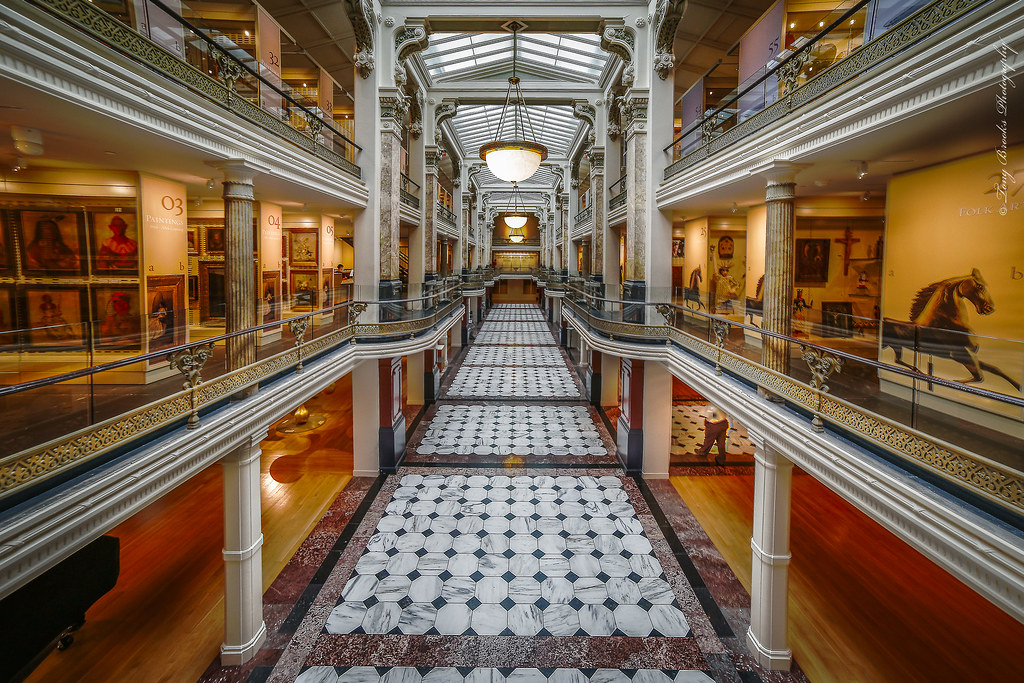
National Portrait Gallery – Washington, D.C.
The National Portrait Gallery is a truly remarkable historic attraction. You’ll see portraits and exhibits dedicated to several people who forged the country into what it is today such as Michelle Obama and Benjamin Franklin. The gallery also has one of the most complete collections of presidential portraits, not including that of the White House.
Fun fact: Despite its name, the gallery houses more than paintings and also includes photographs, sculptures, engravings, and more.
45. Pearl Harbor – Honolulu, Hawaii
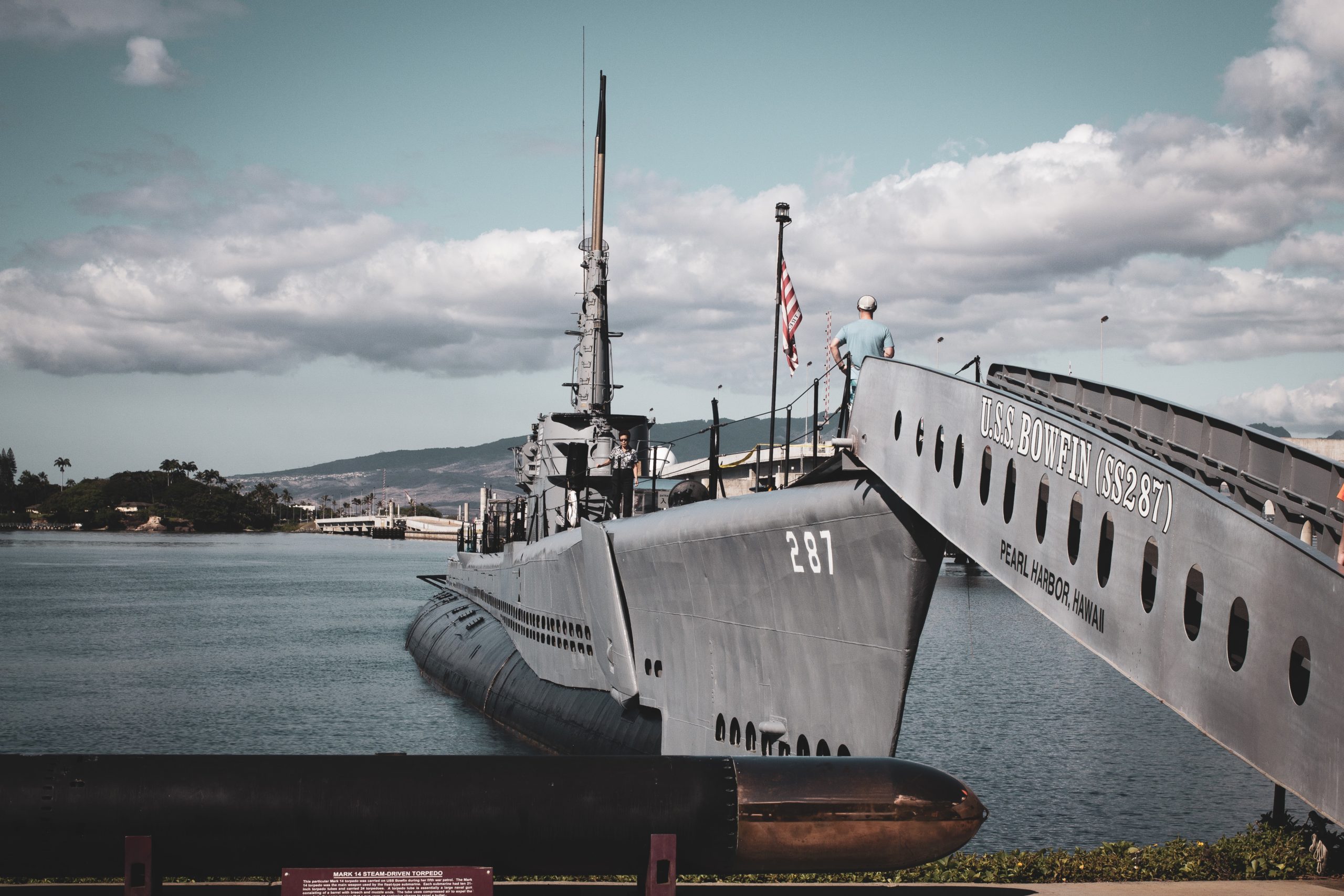
Pearl Harbor – Honolulu, Hawaii
Last on our travel list, Pearl Harbor is such an integral part of American history, though it may be more difficult to get to than the other attractions we’ve listed in the mainland. This National Historic Landmark encompasses four different attractions: the USS Arizona Memorial, the Battleship Missouri Memorial, the USS Bowfin, and the Pearl Harbor Aviation Museum.
Fun fact: The attack on Pearl Harbor is what finalized the United States’ entry into World War II; Congress approved the President’s declaration of war the very next day.
Short Infographic Top 10 US Attractions for history Buffs:
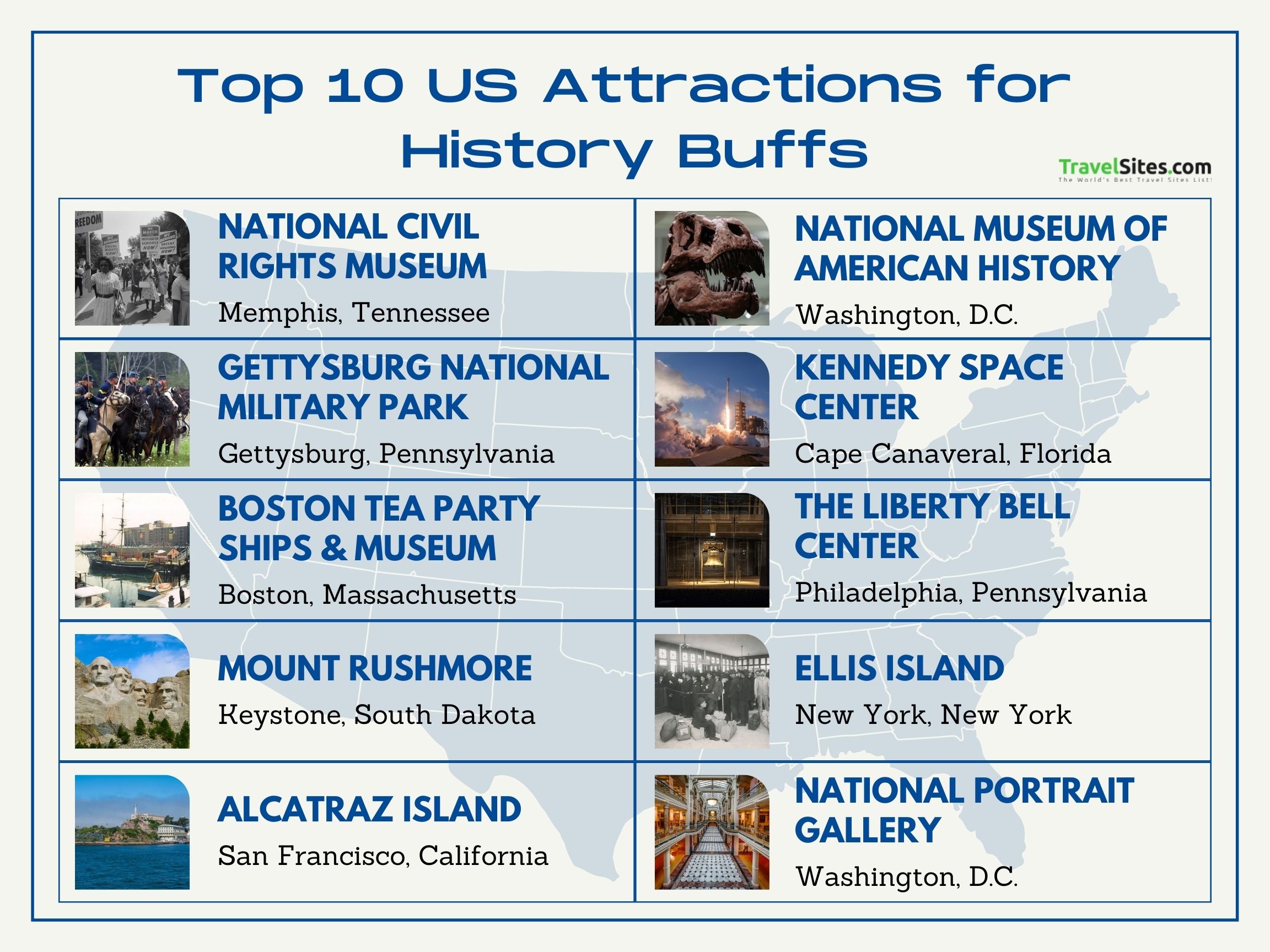
Top 10 US Attractions for
History Buffs